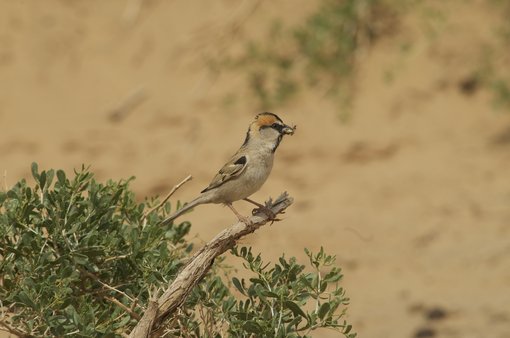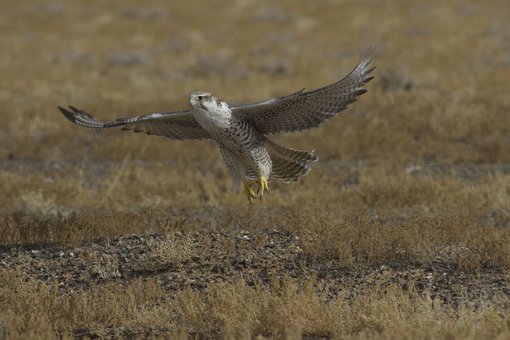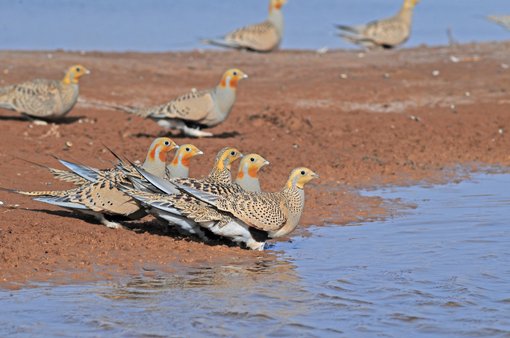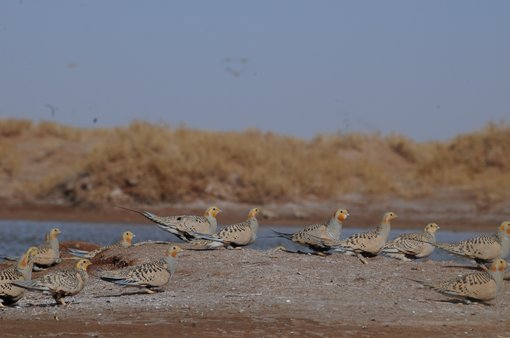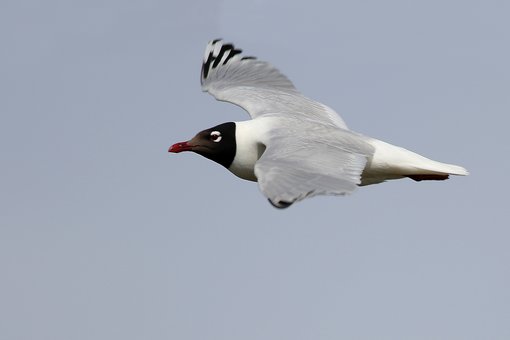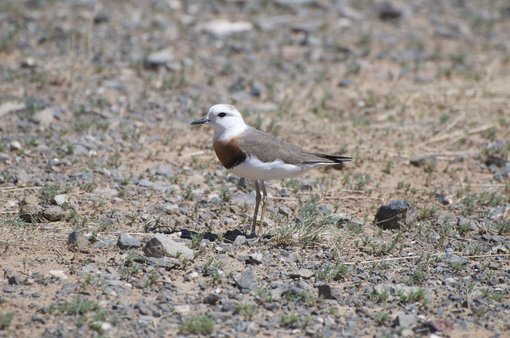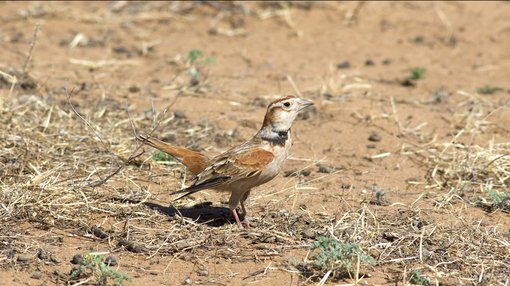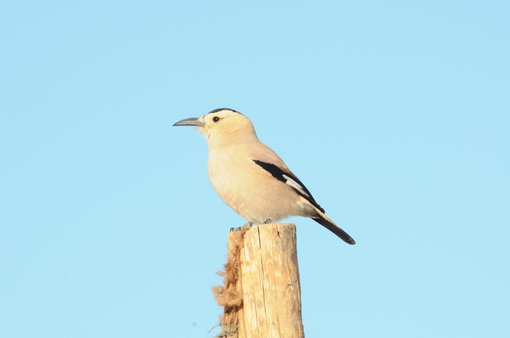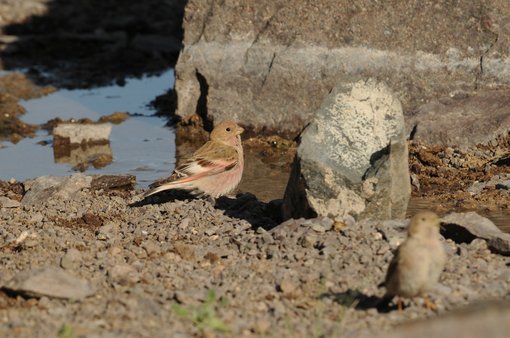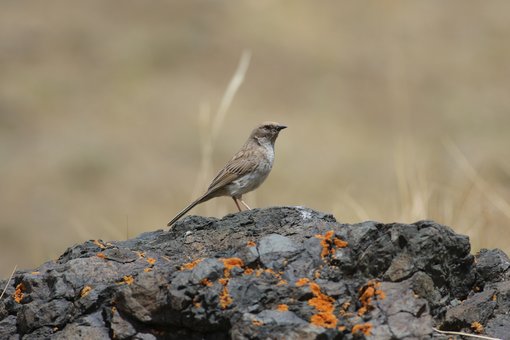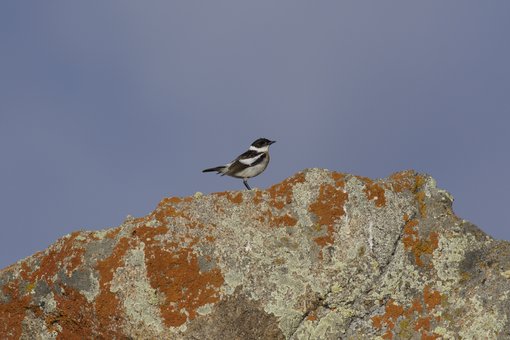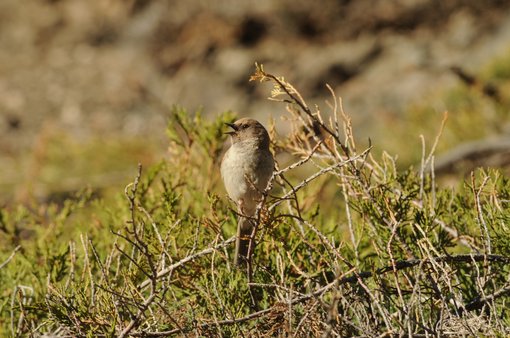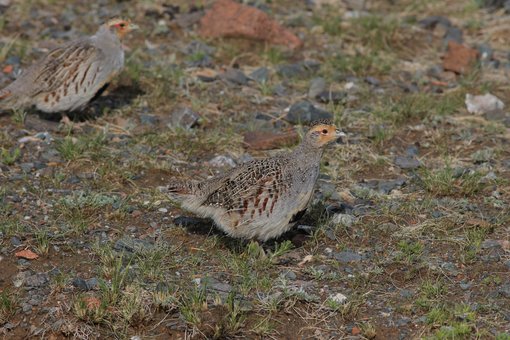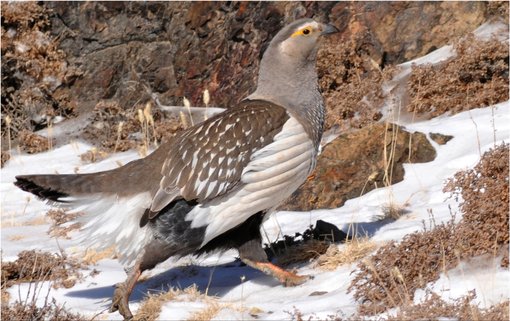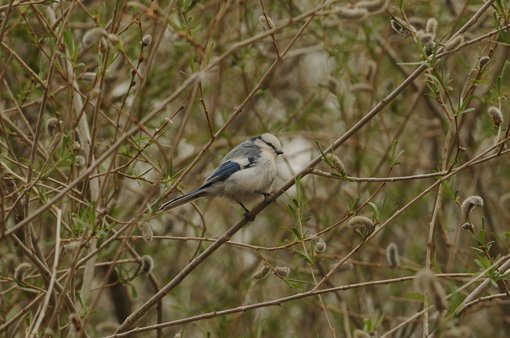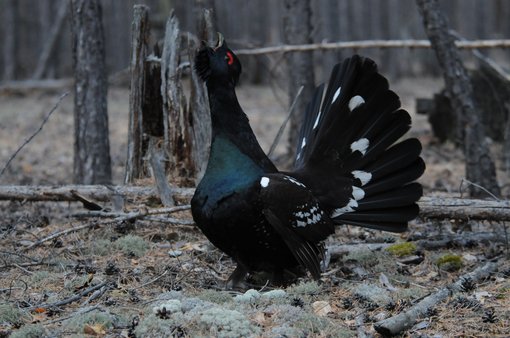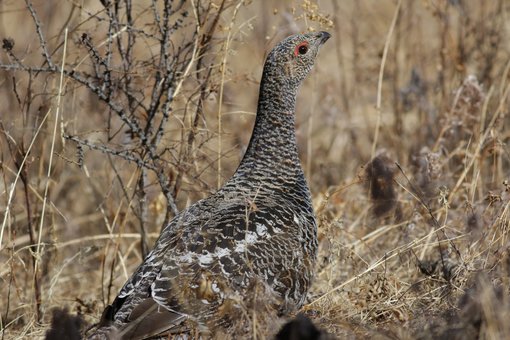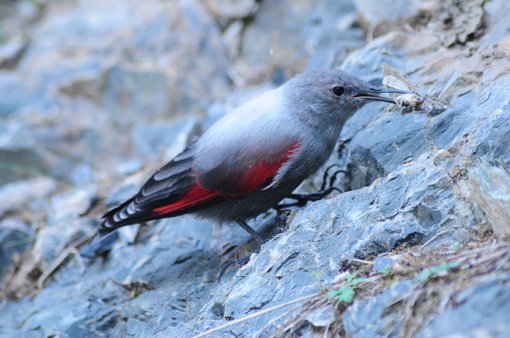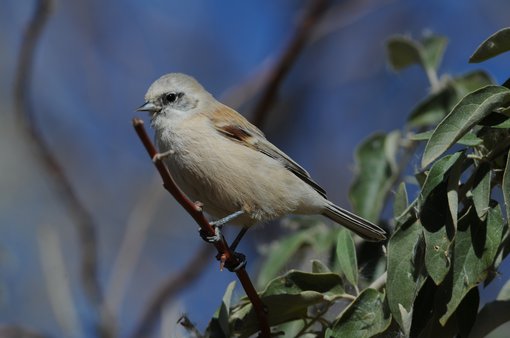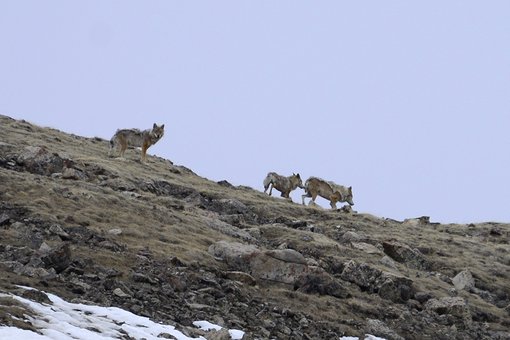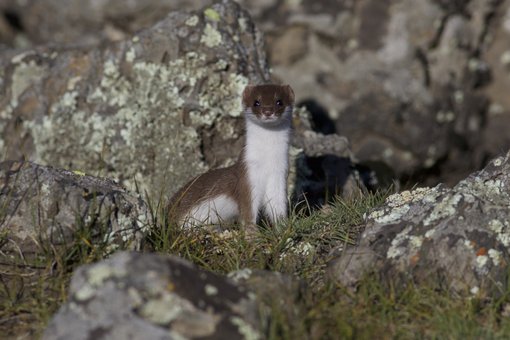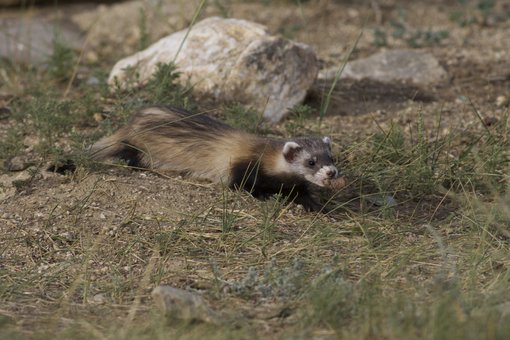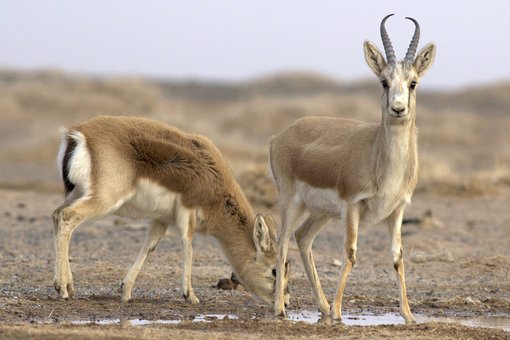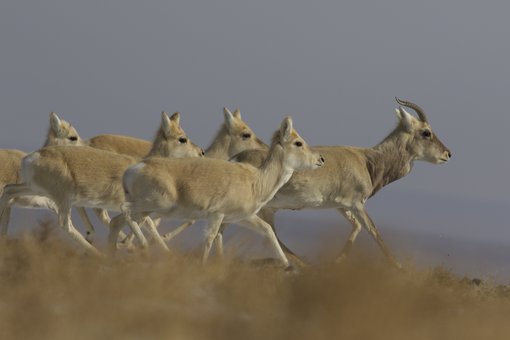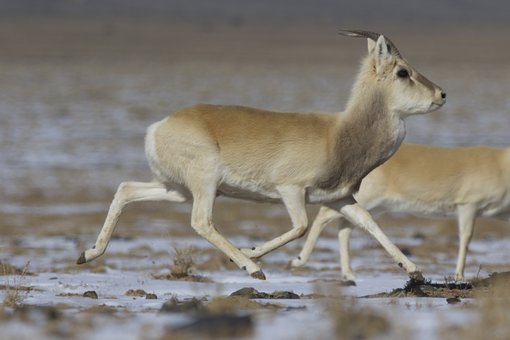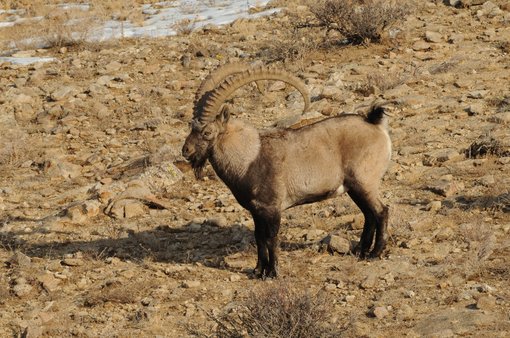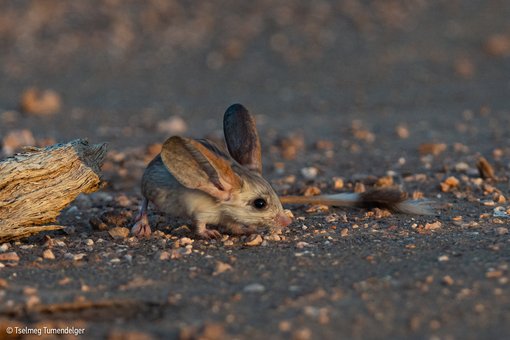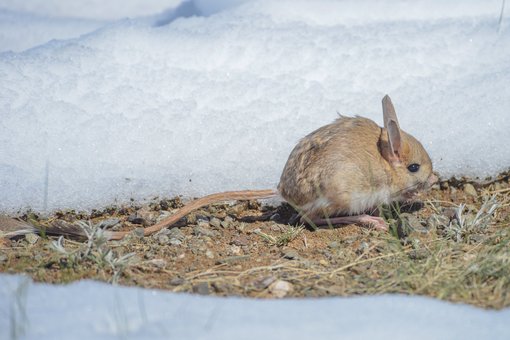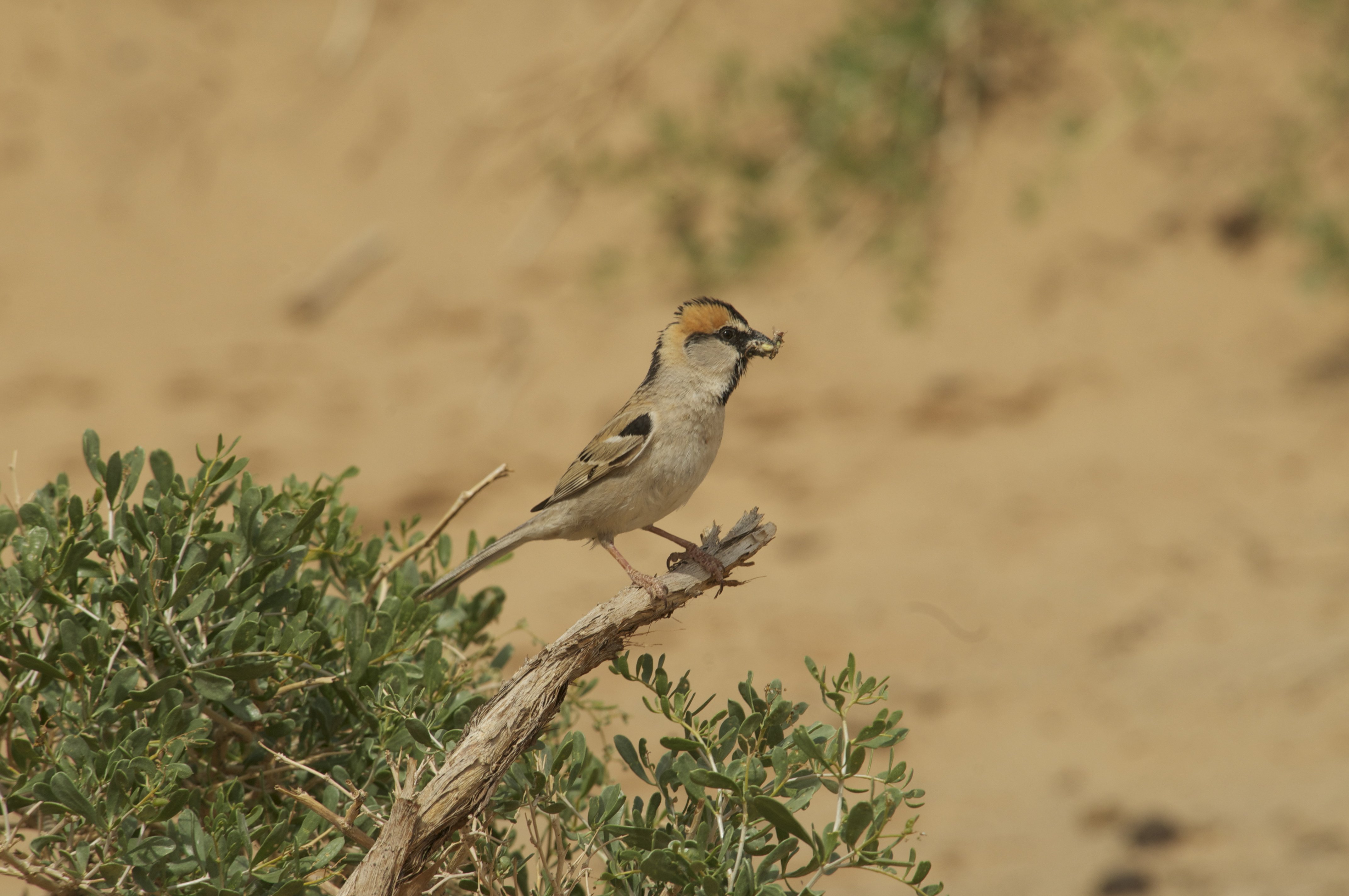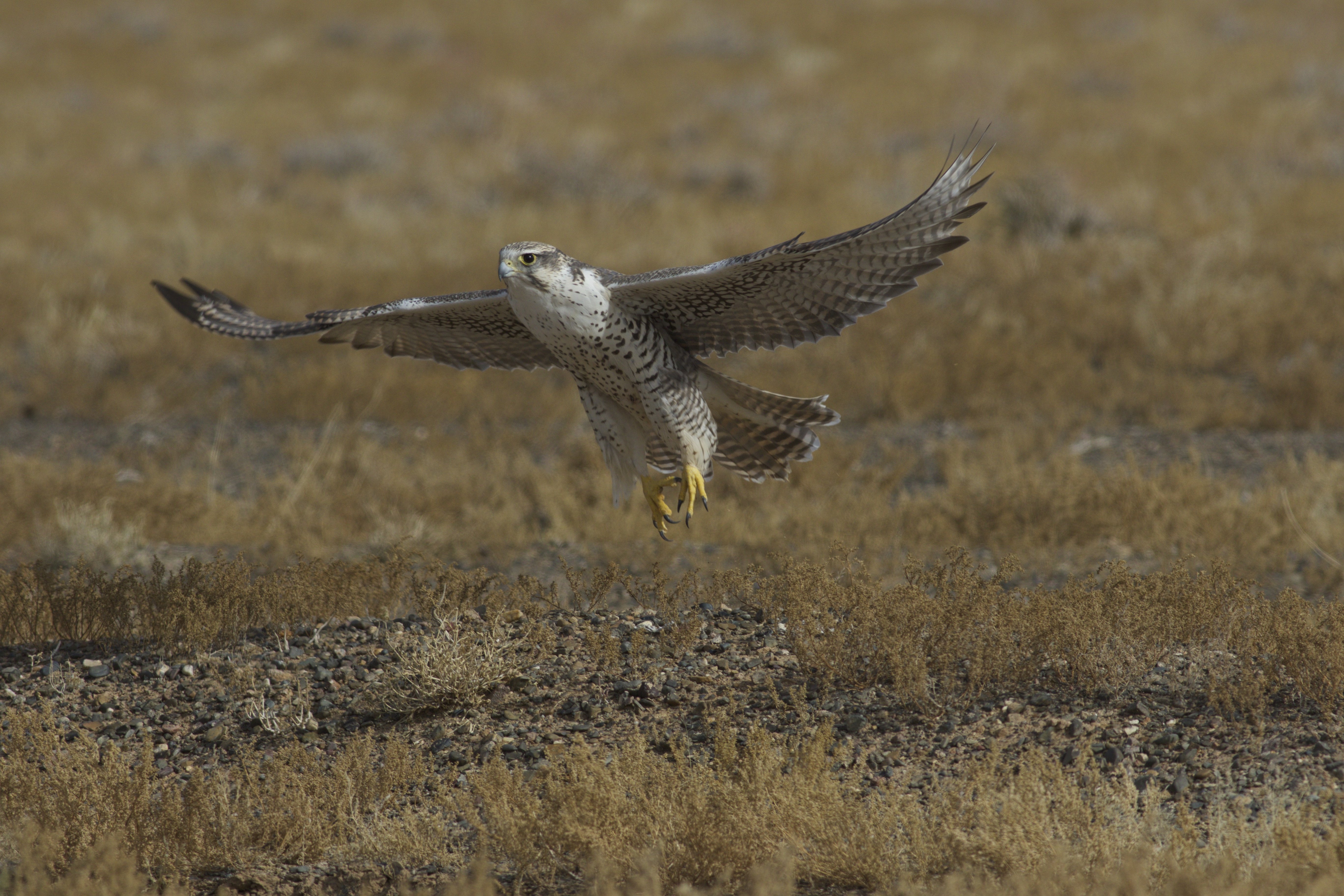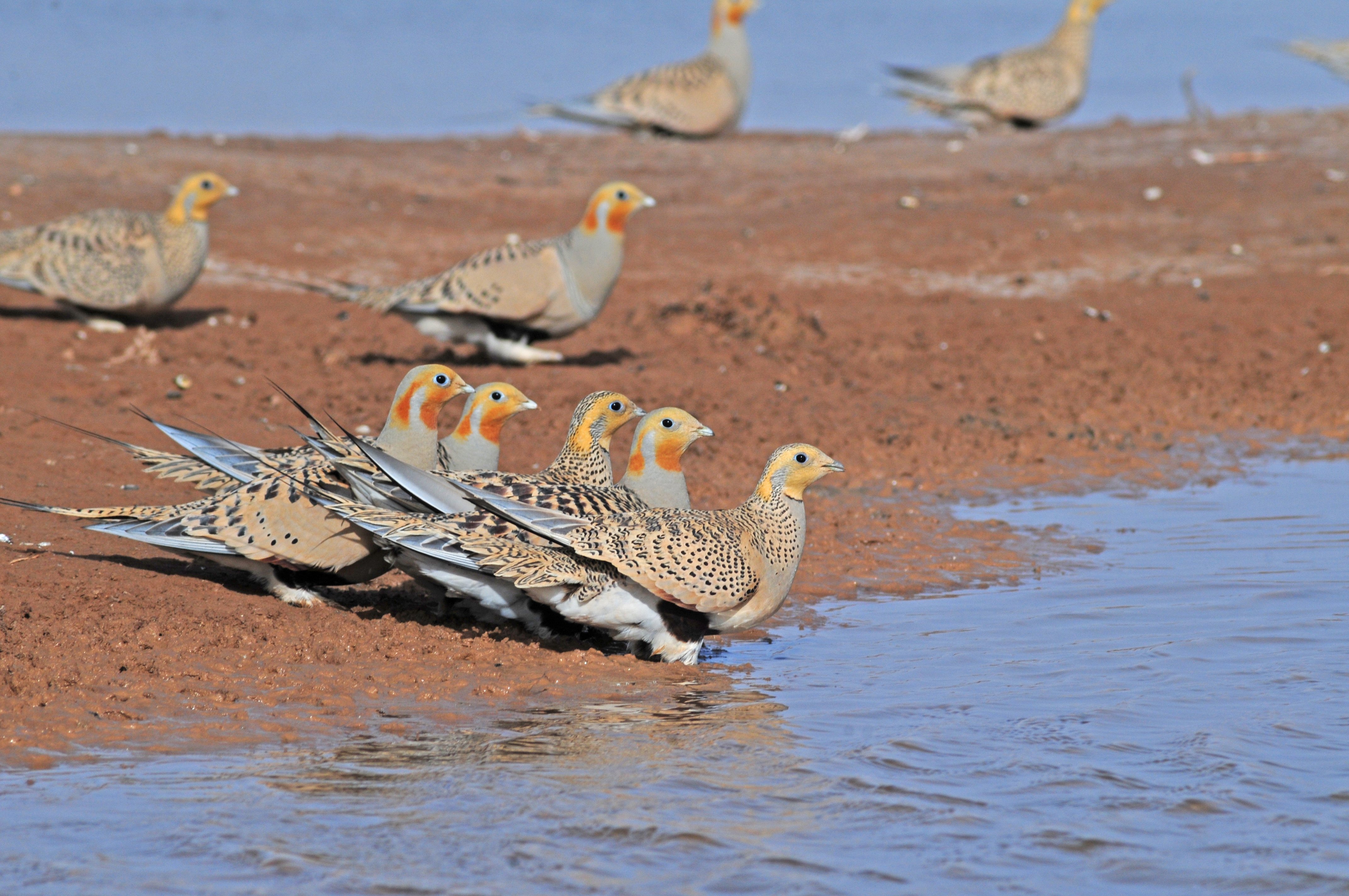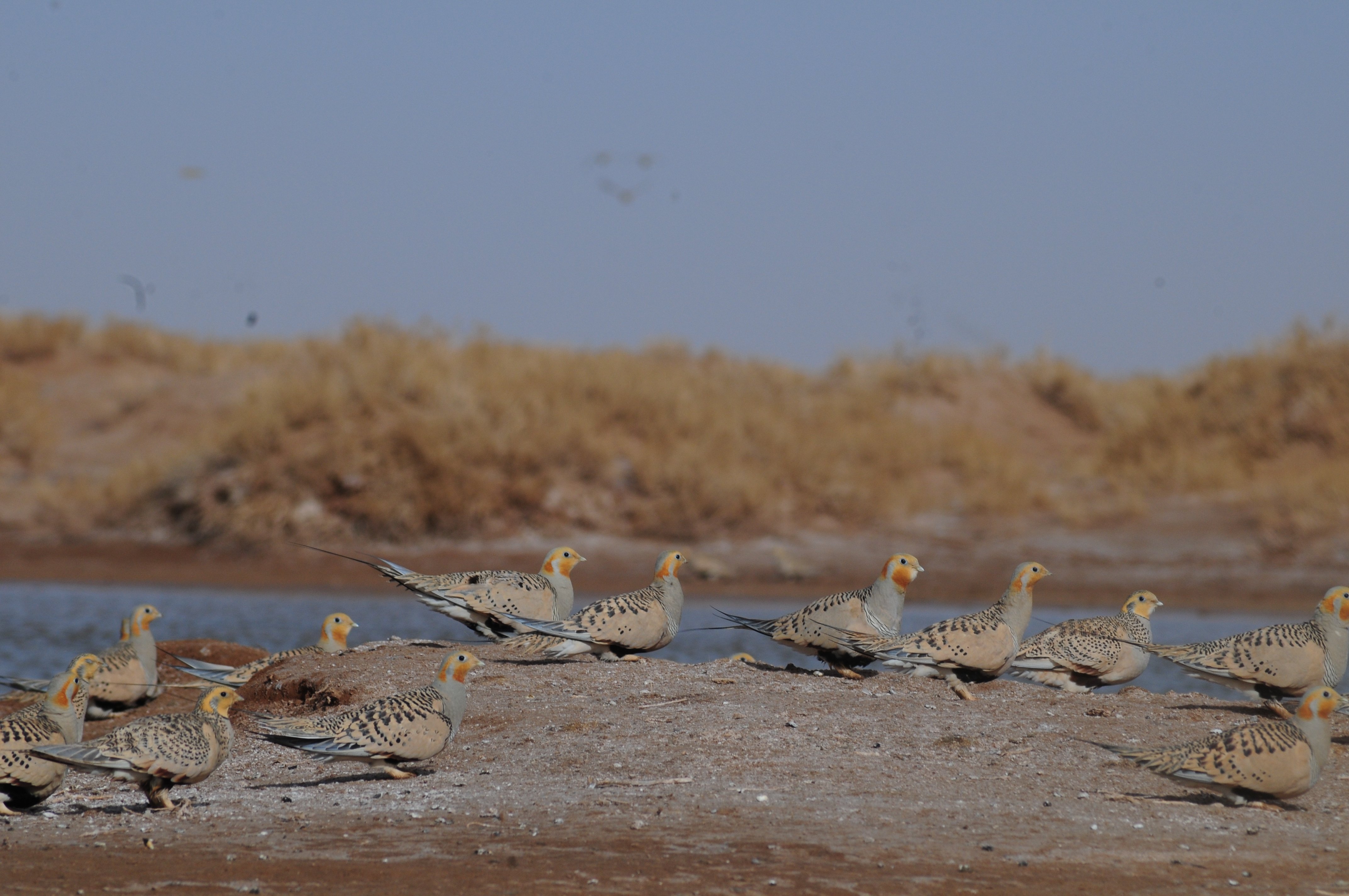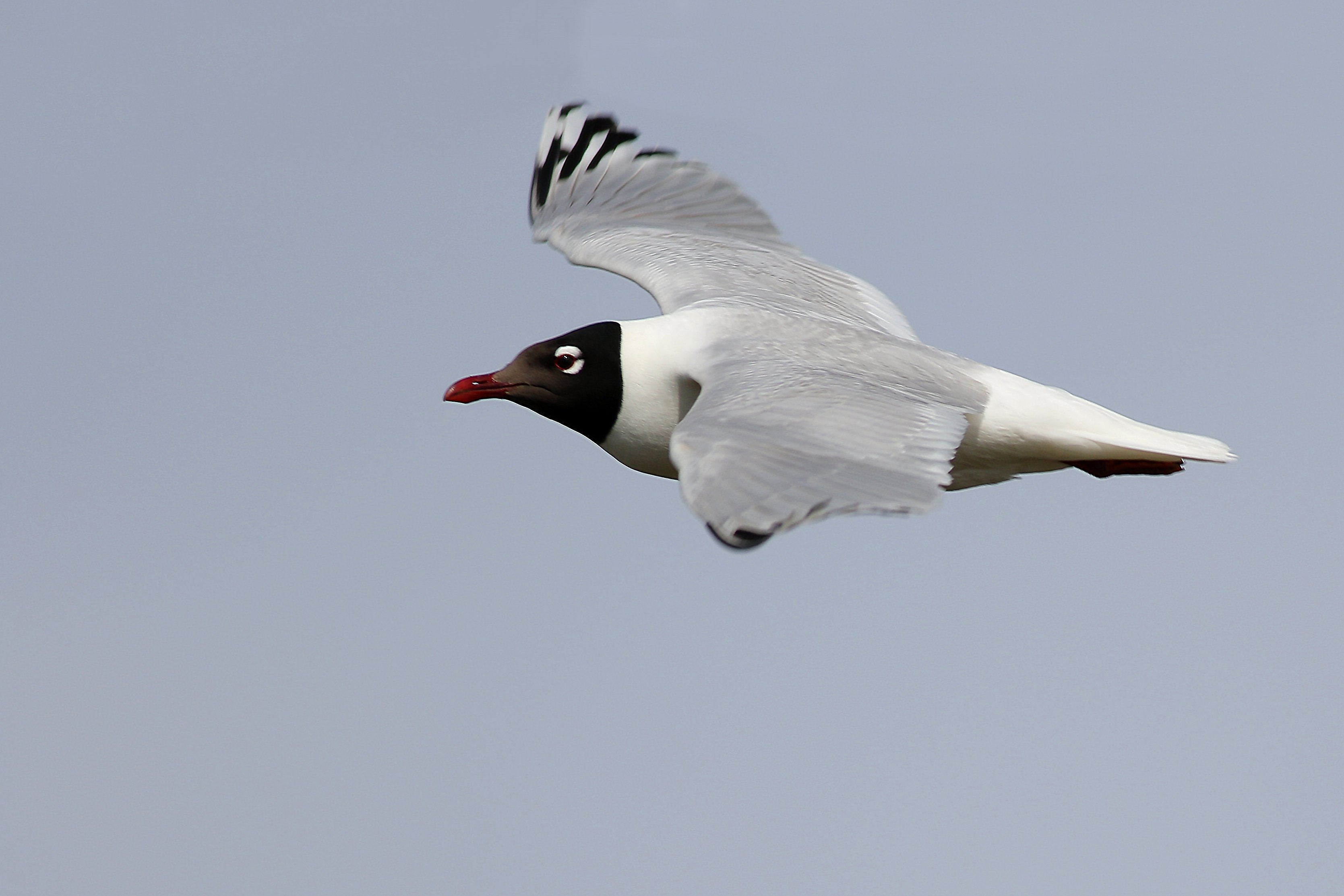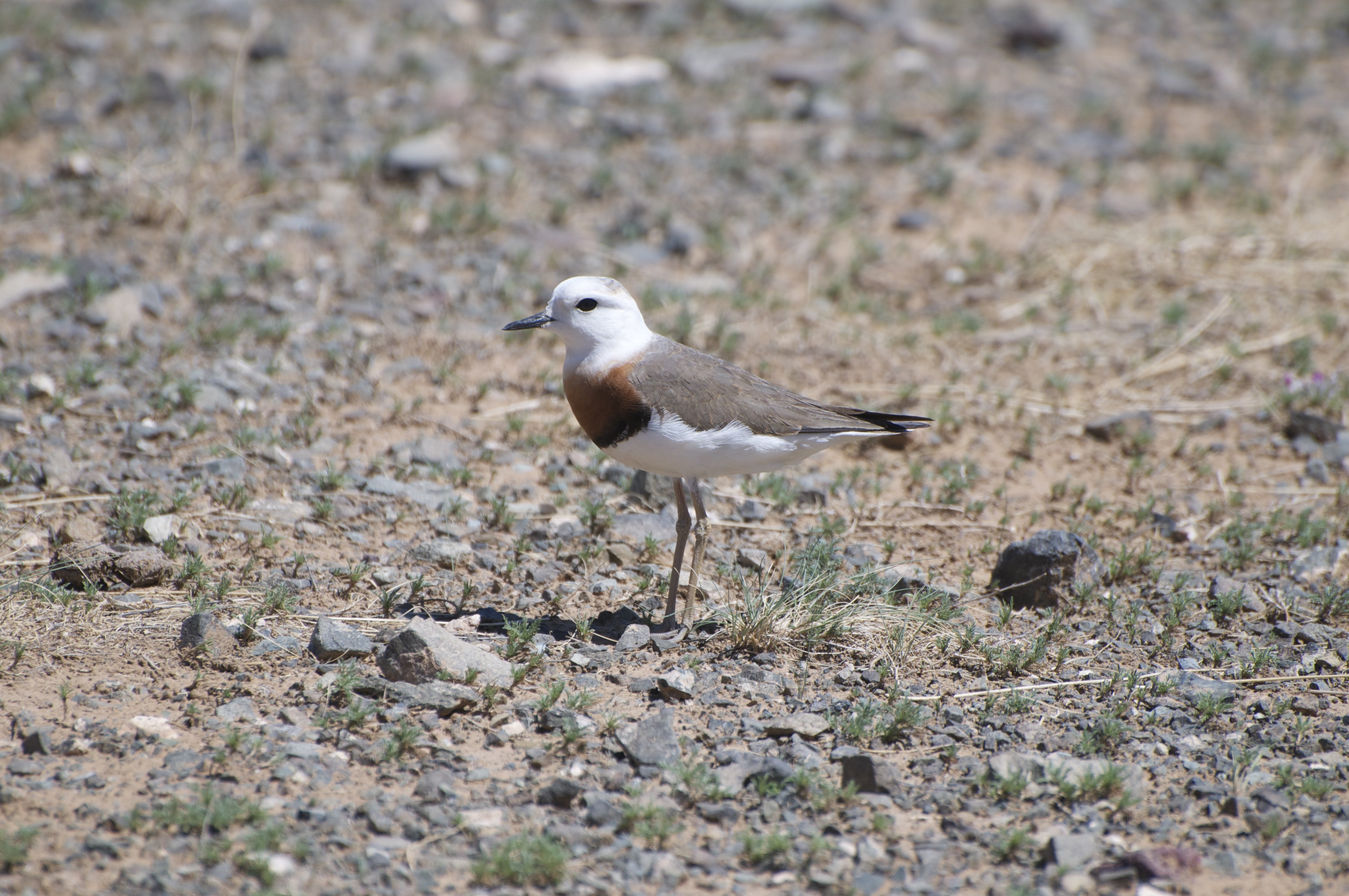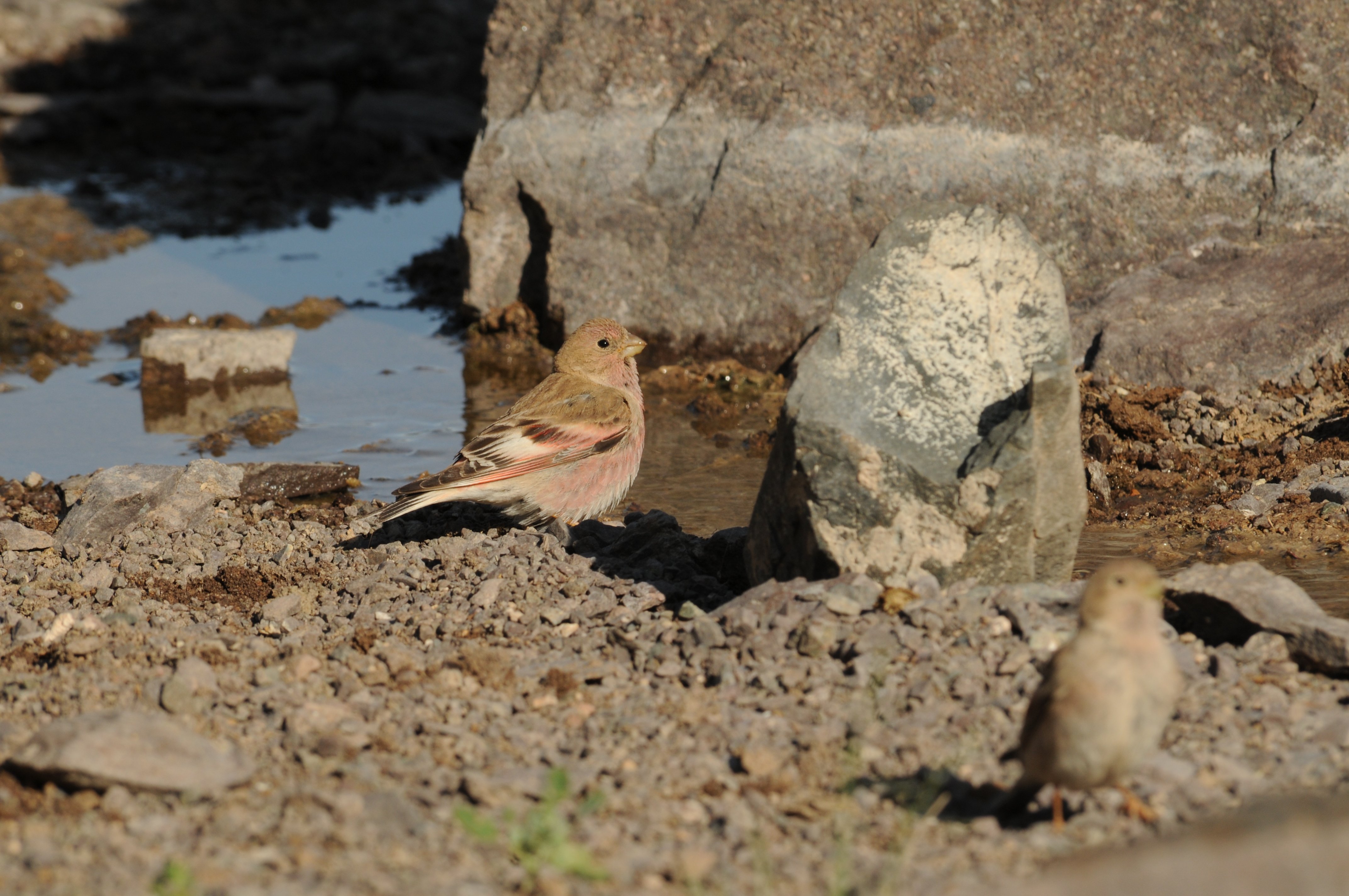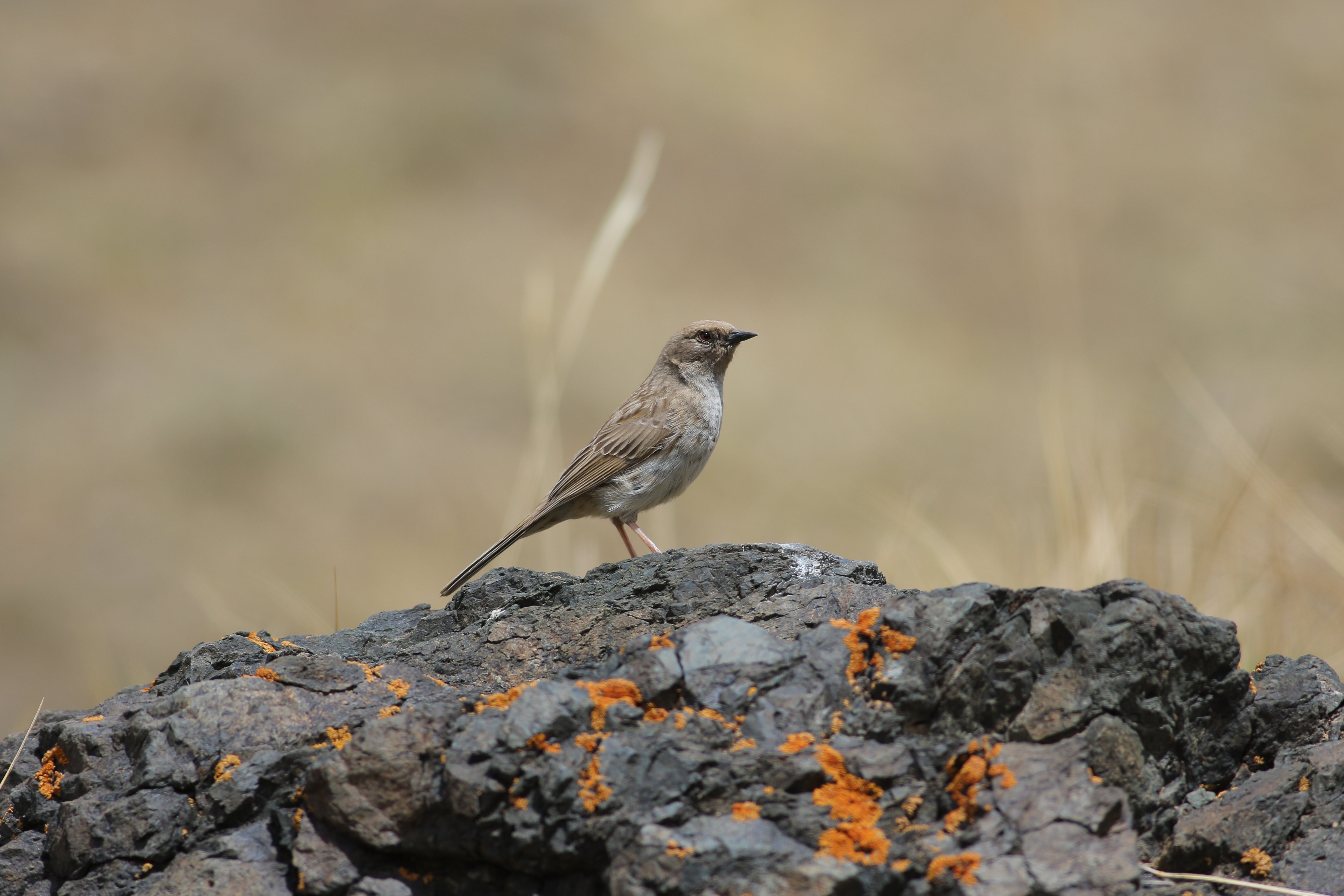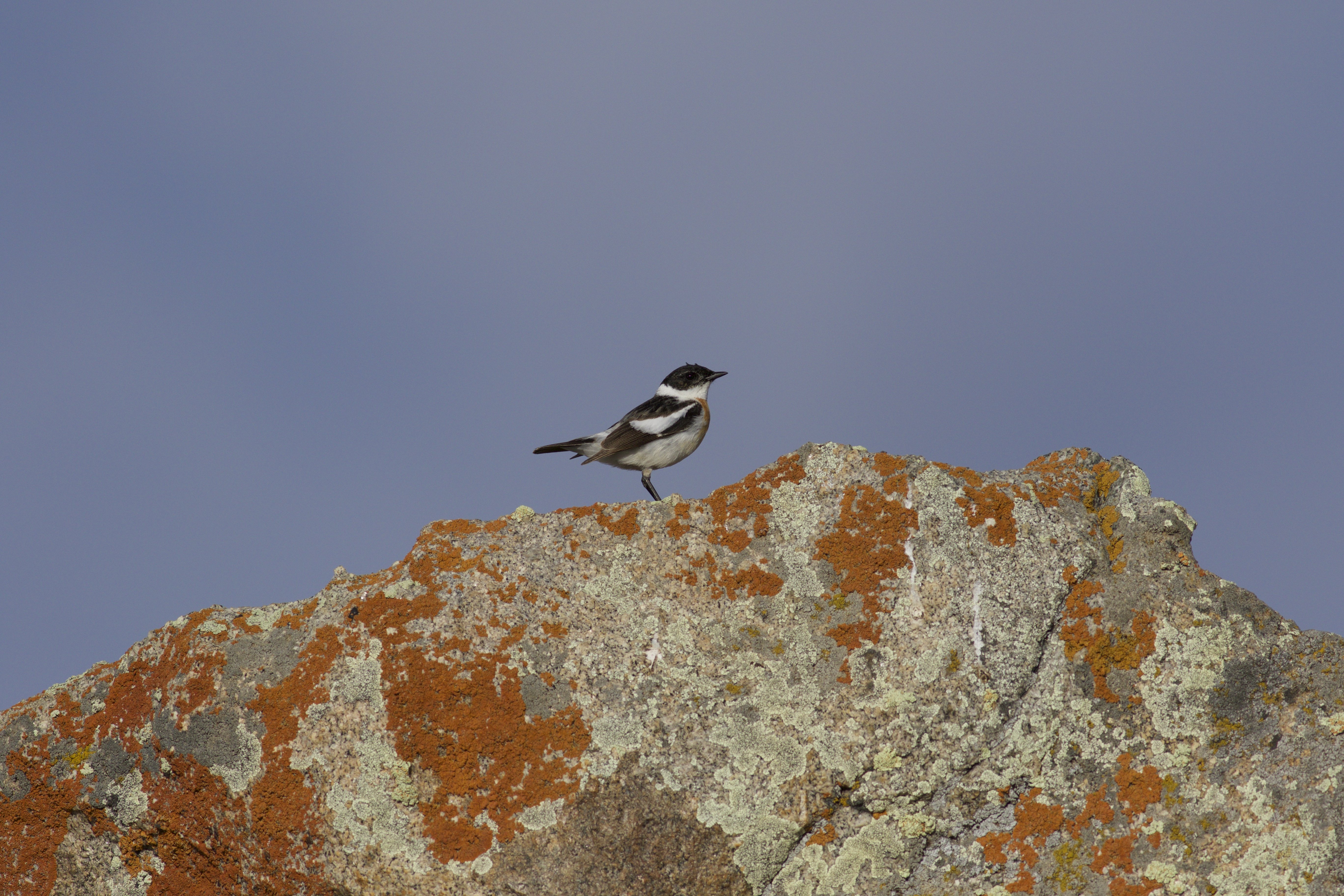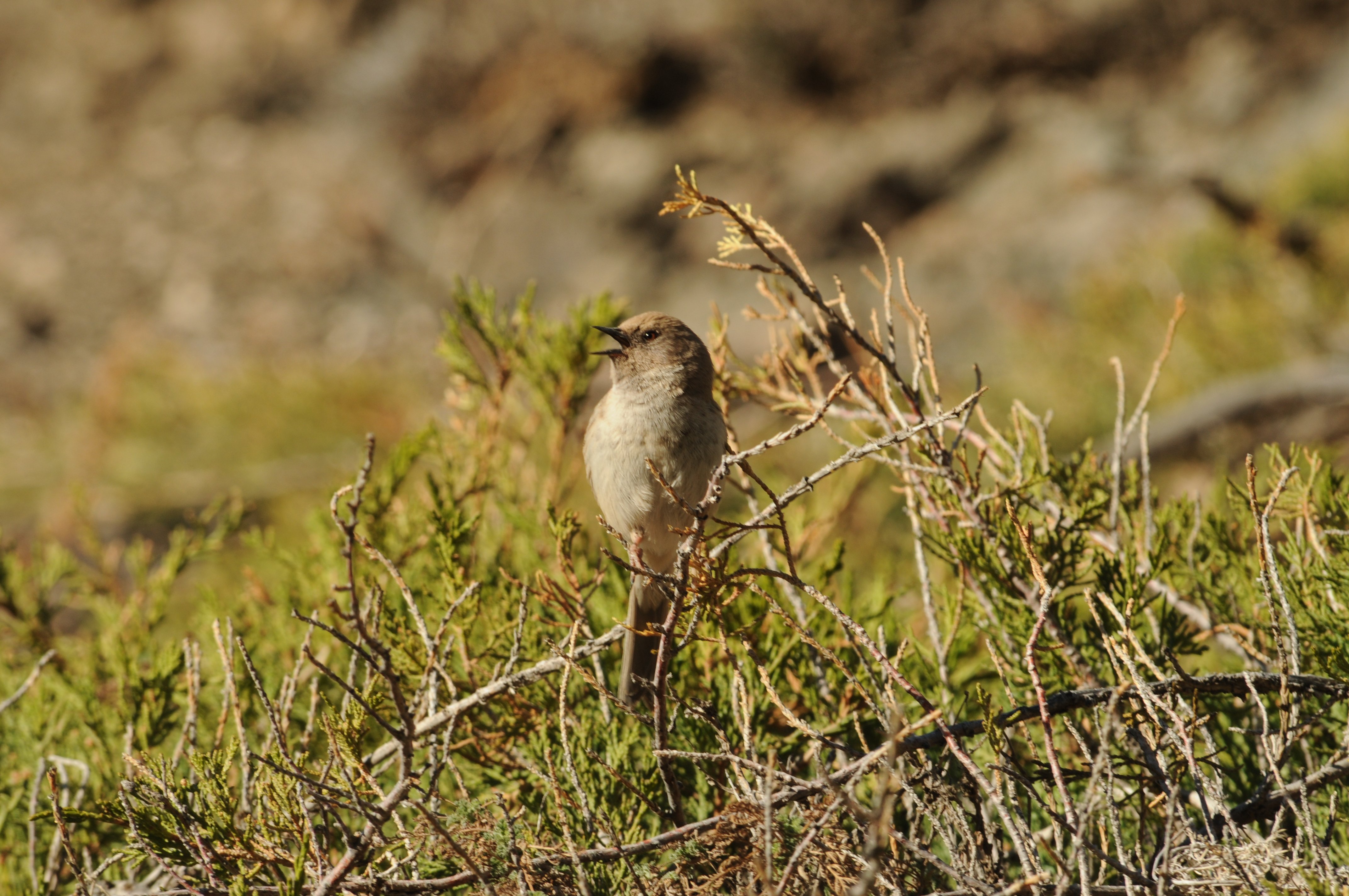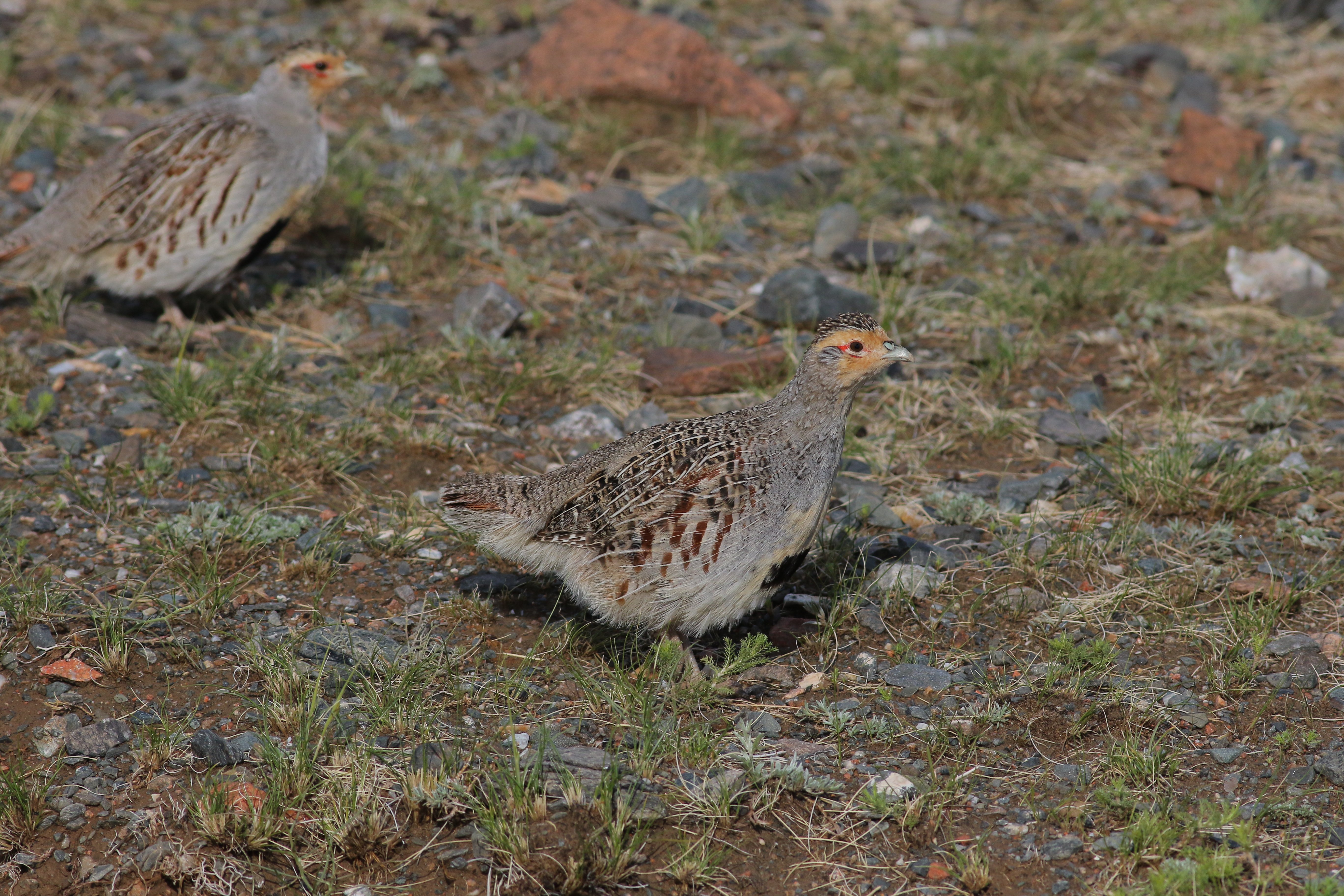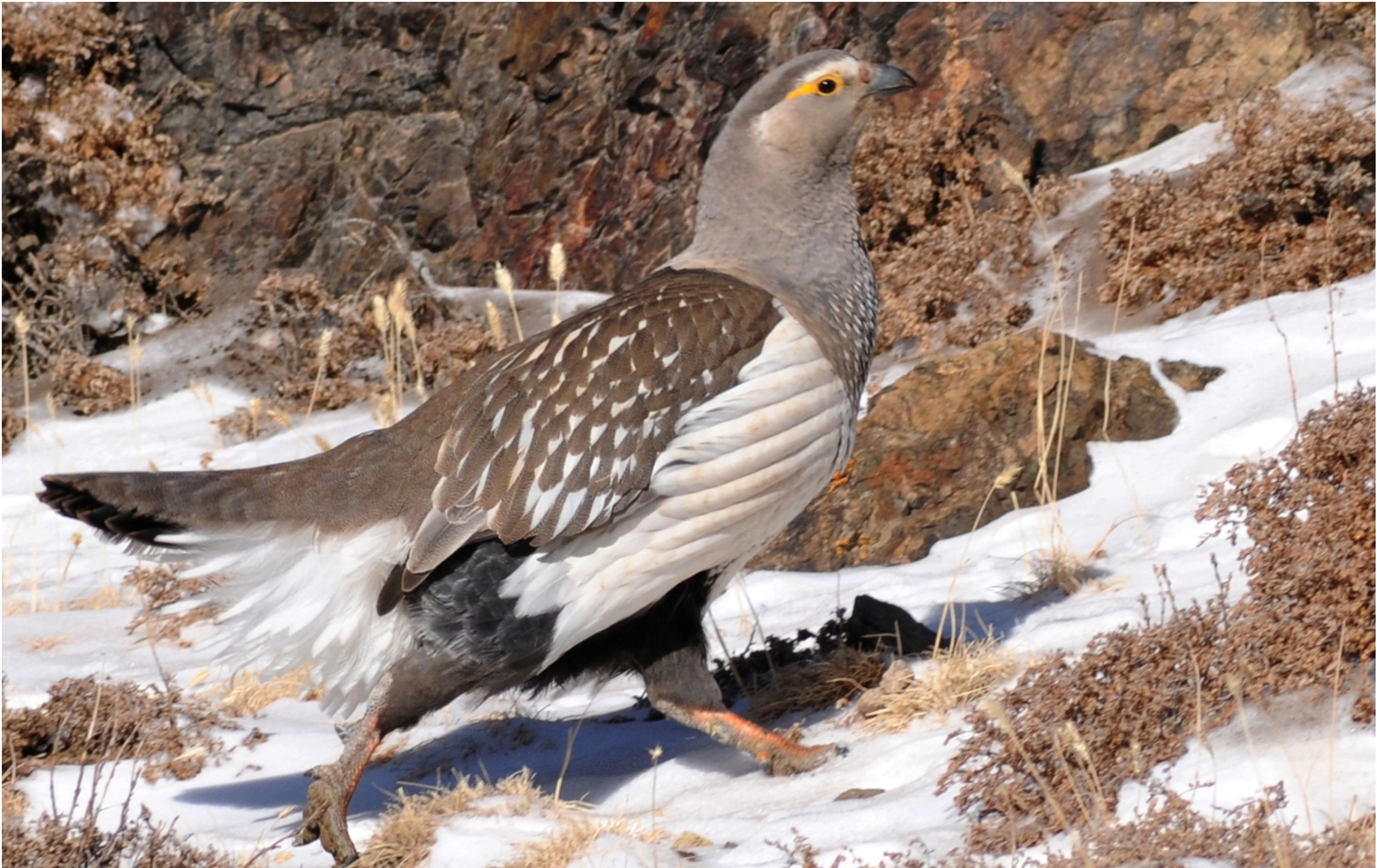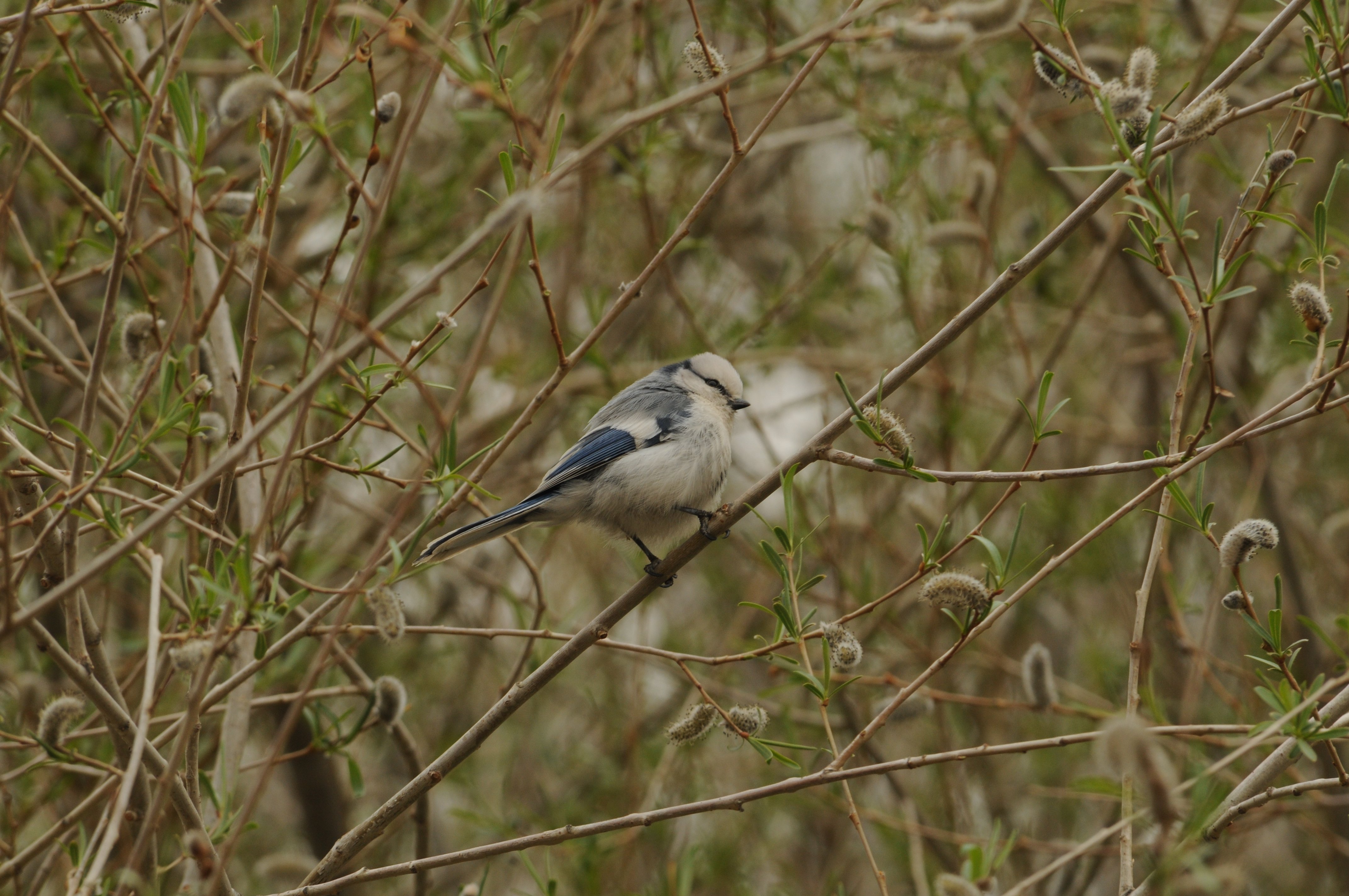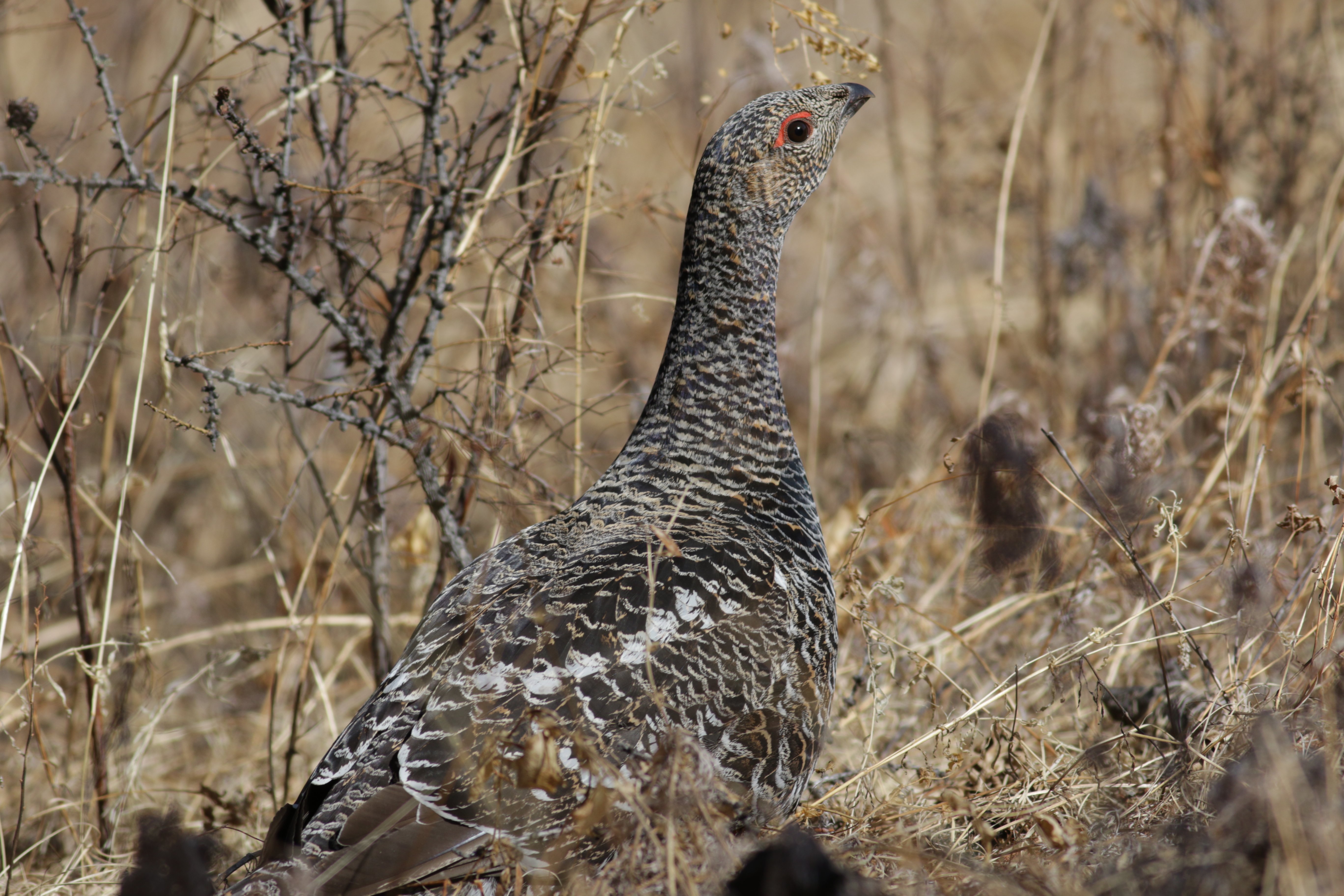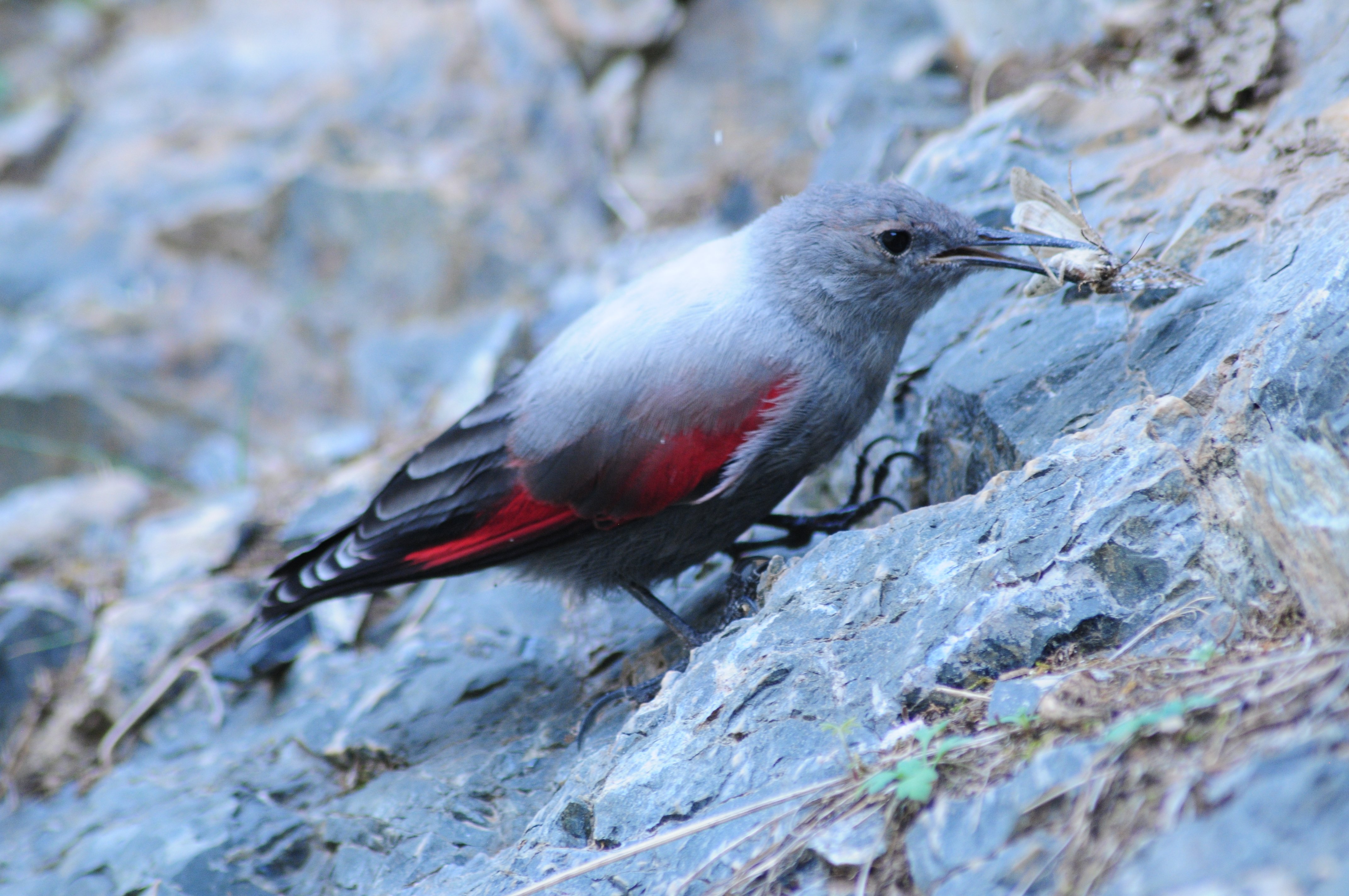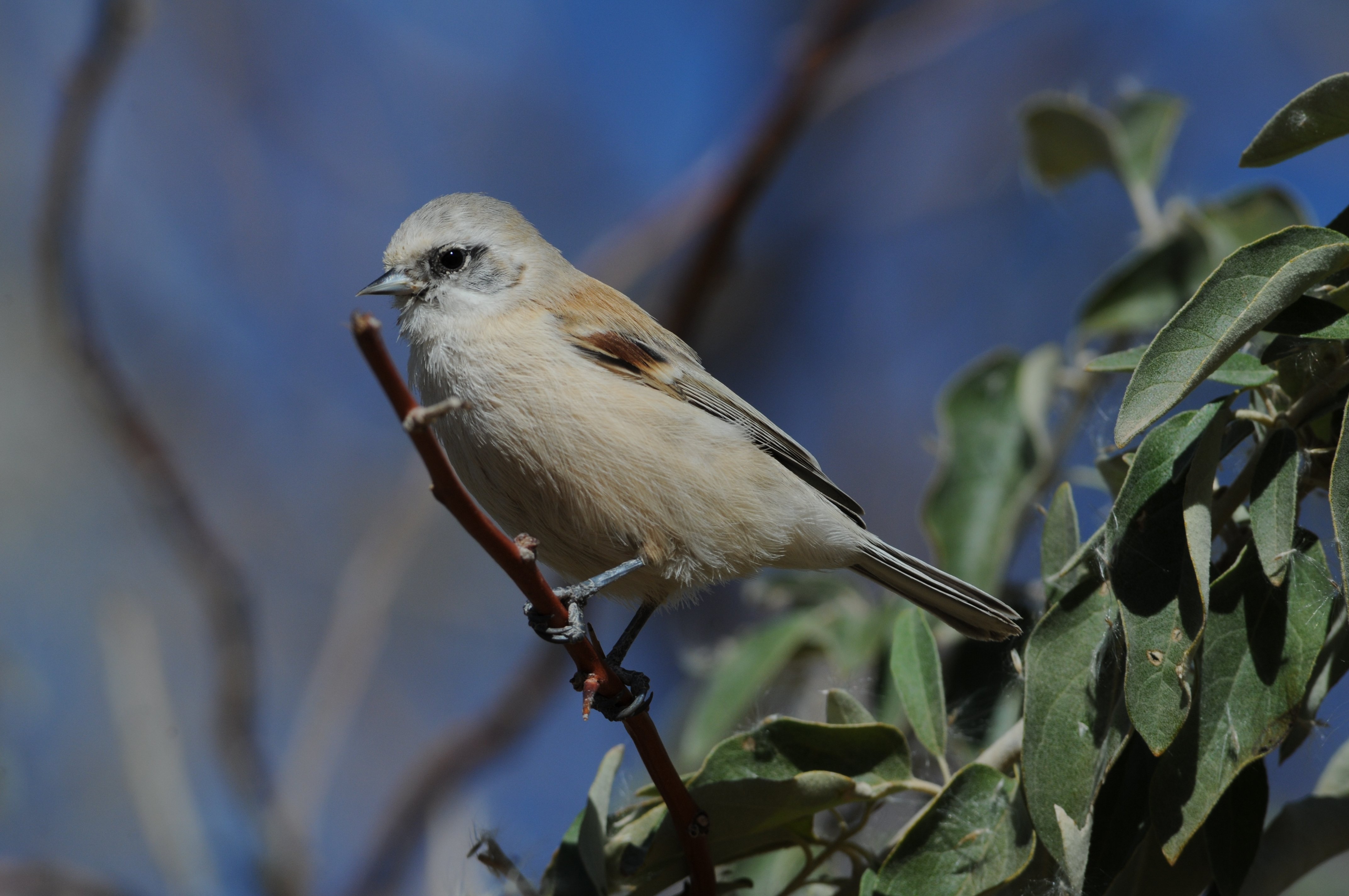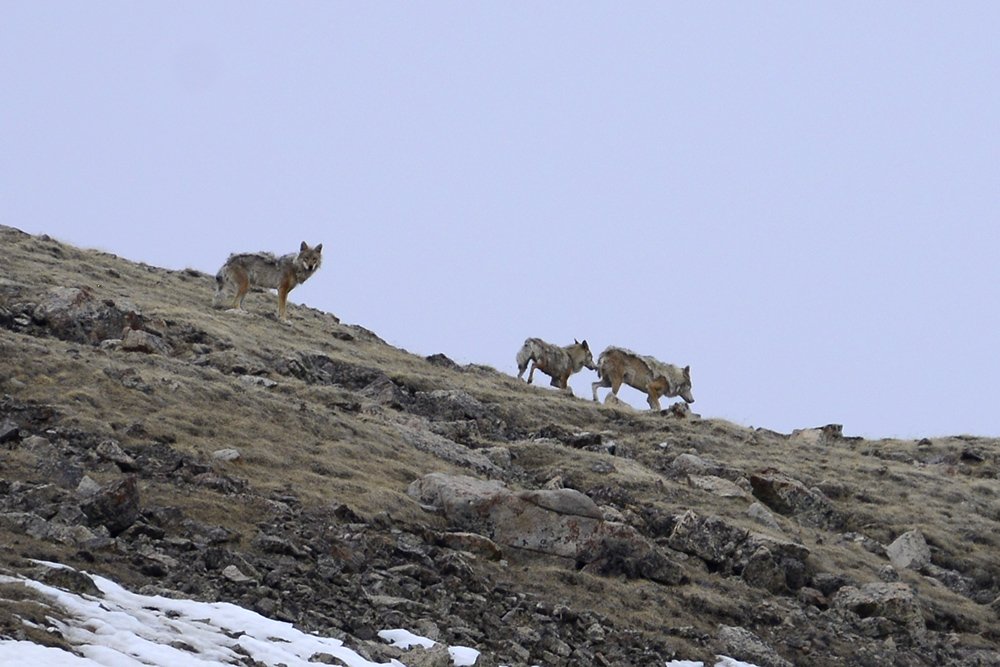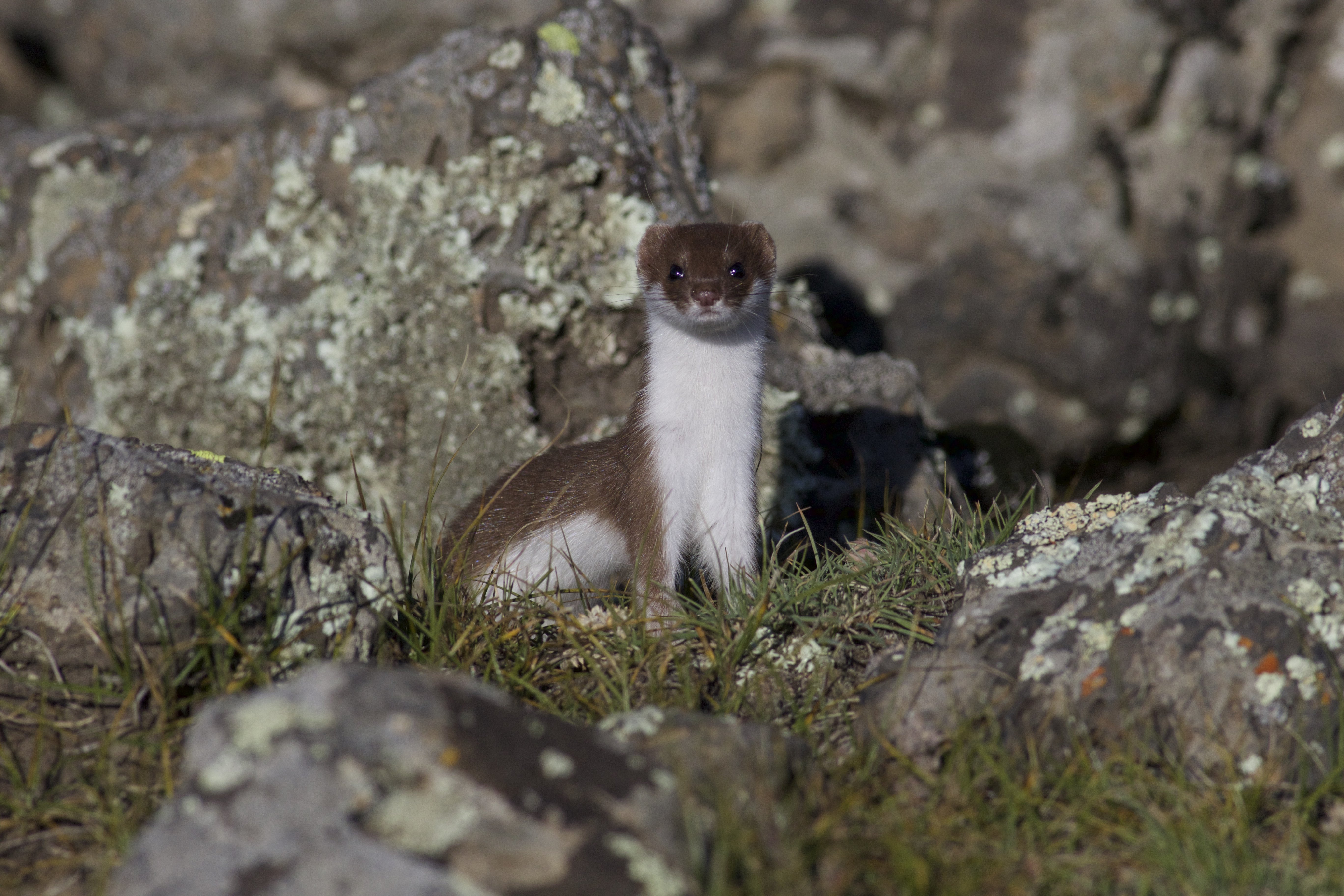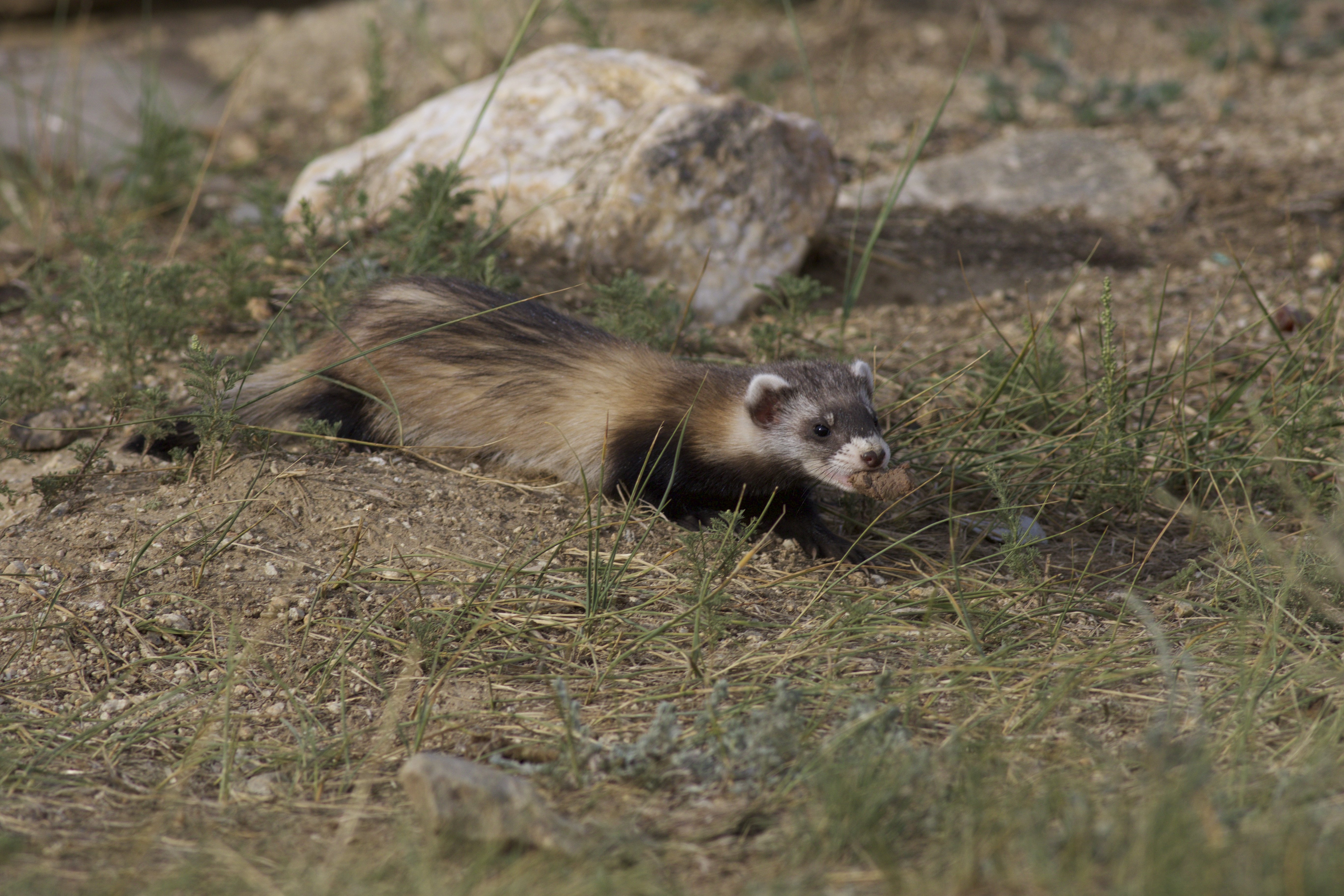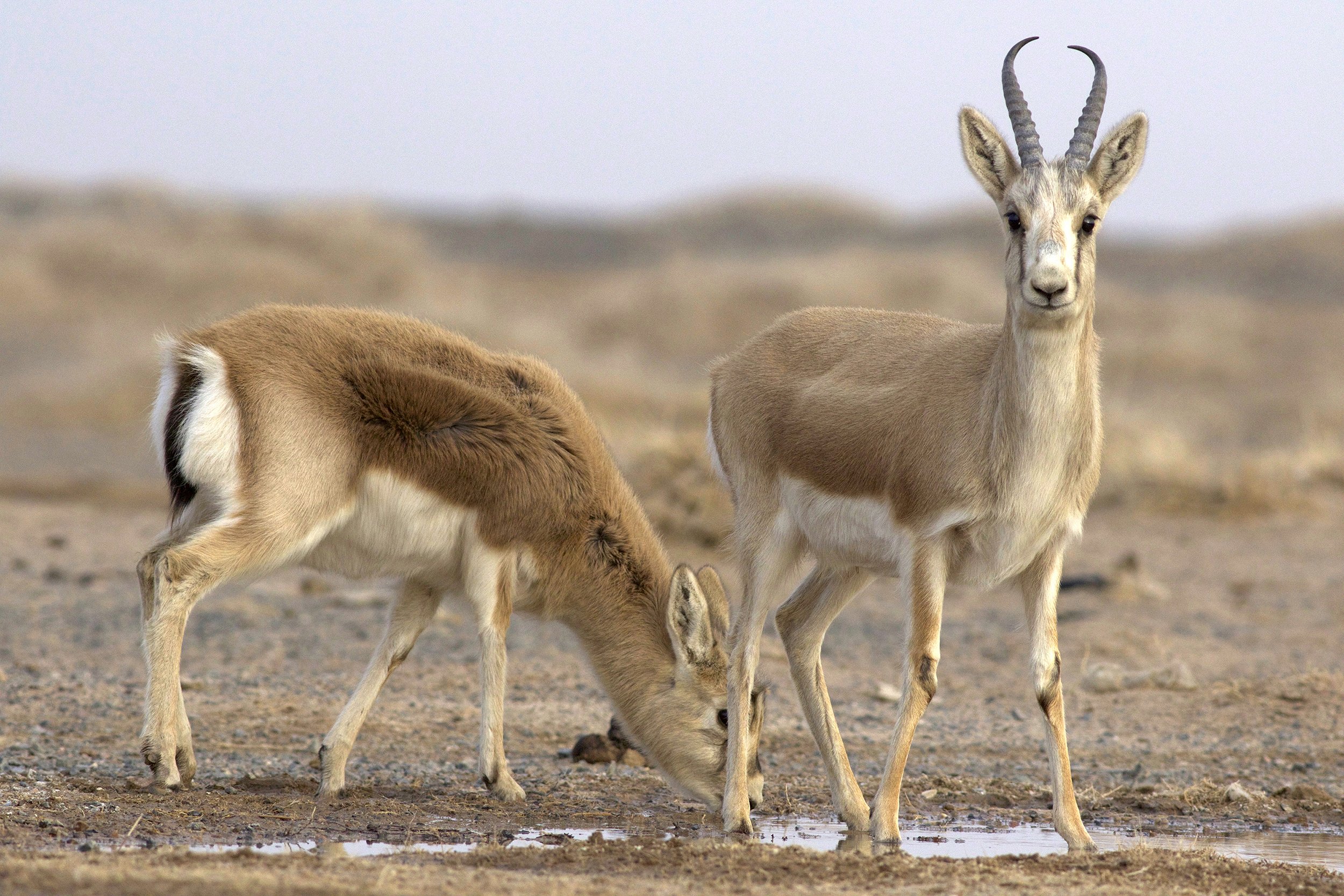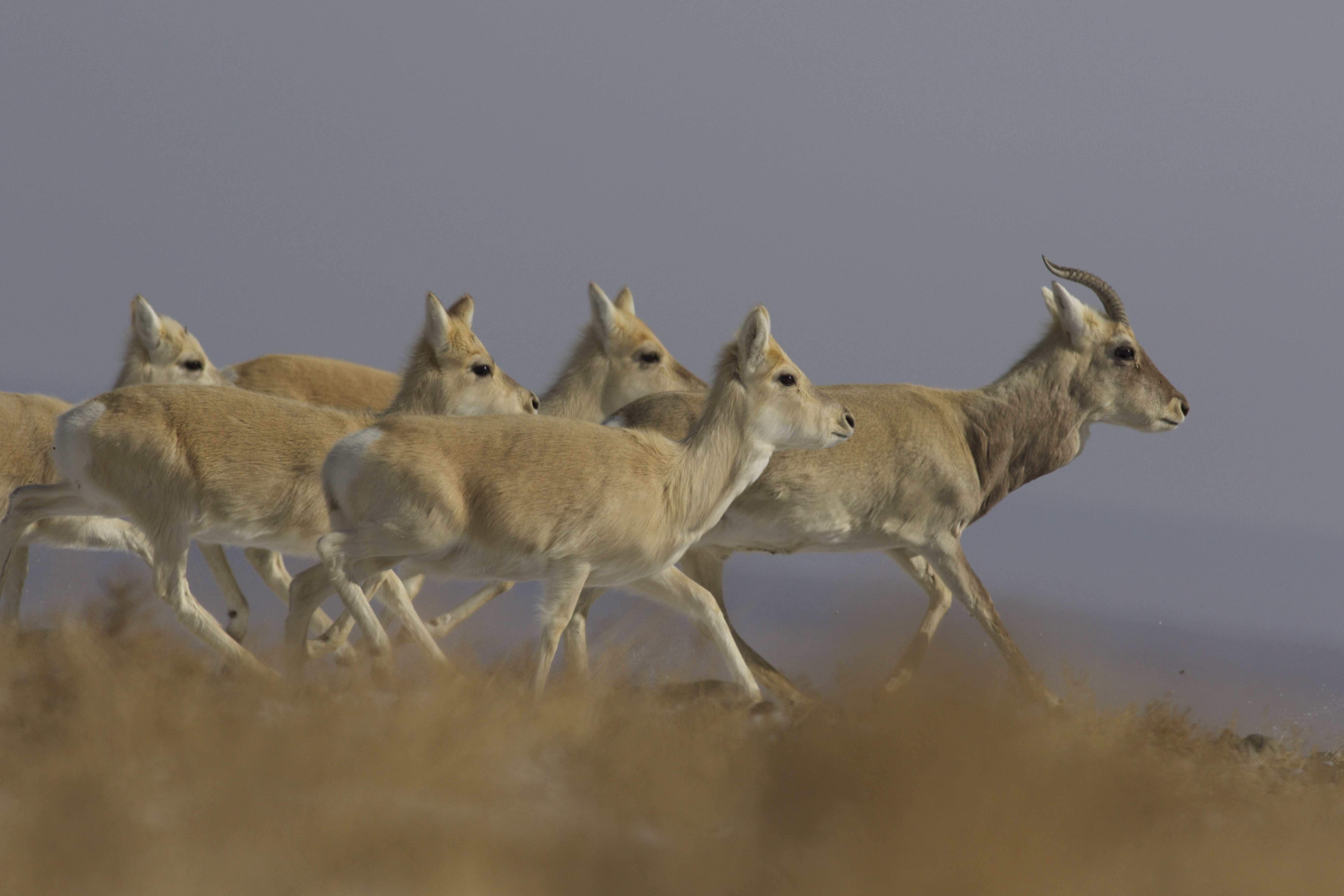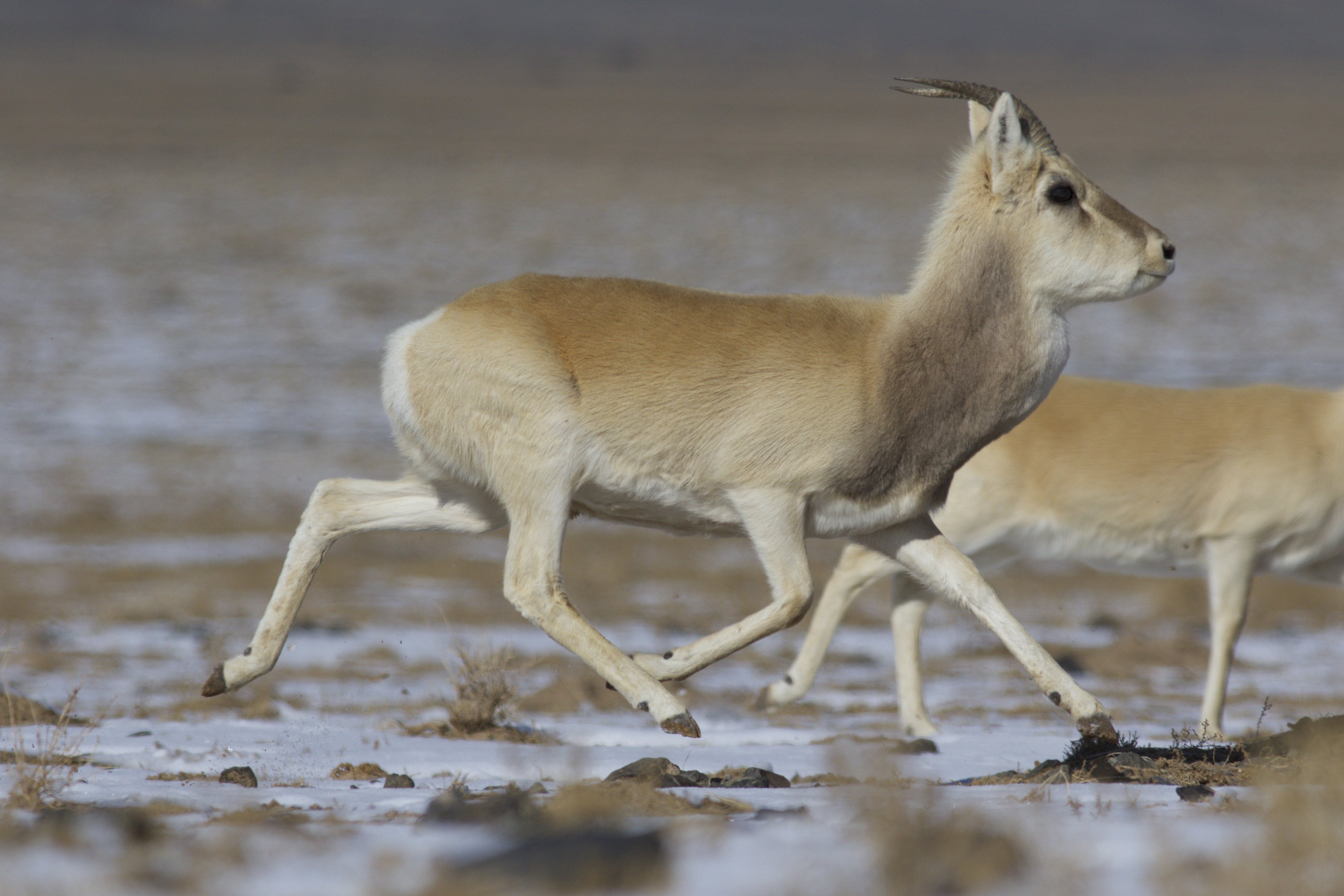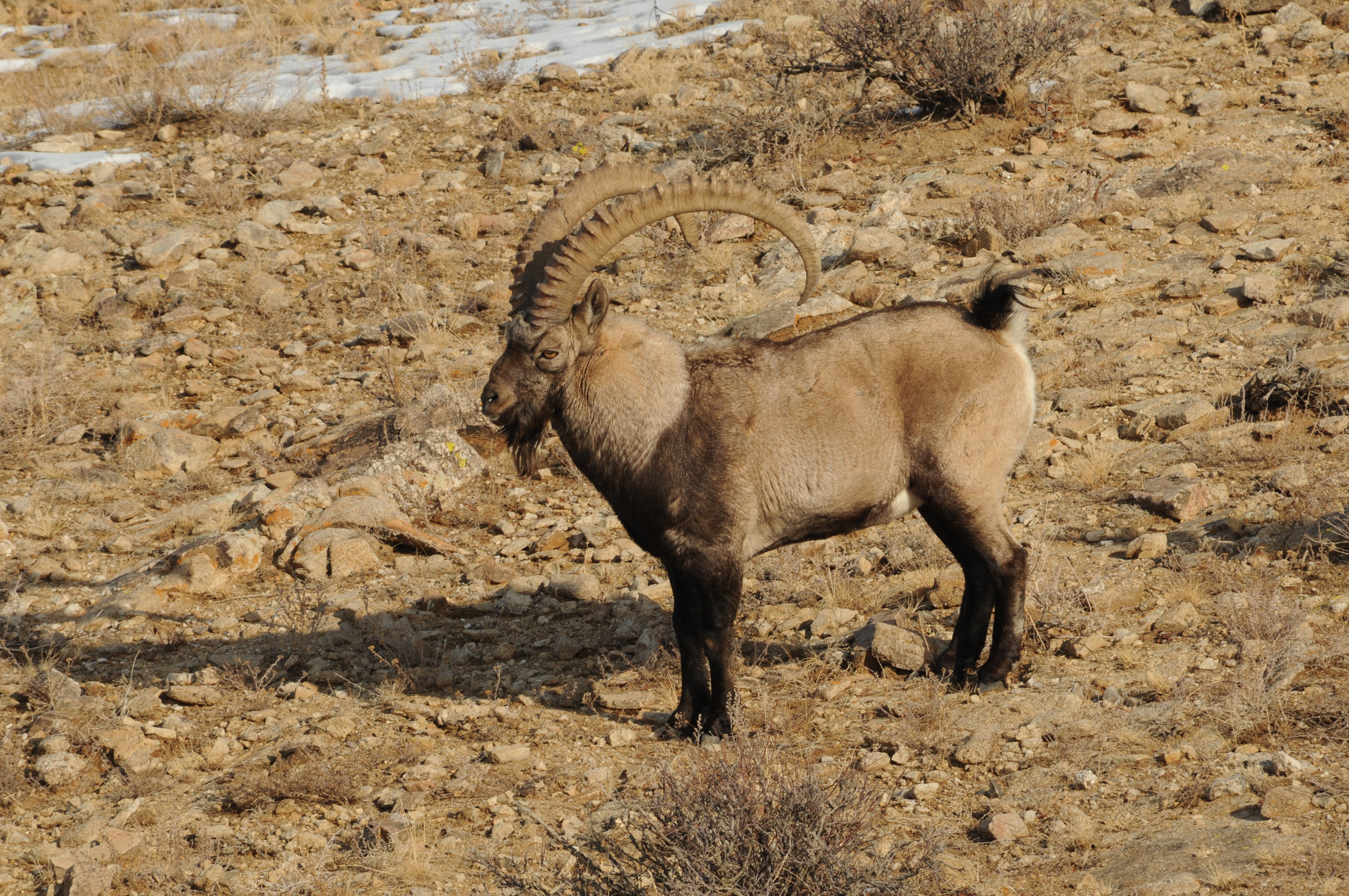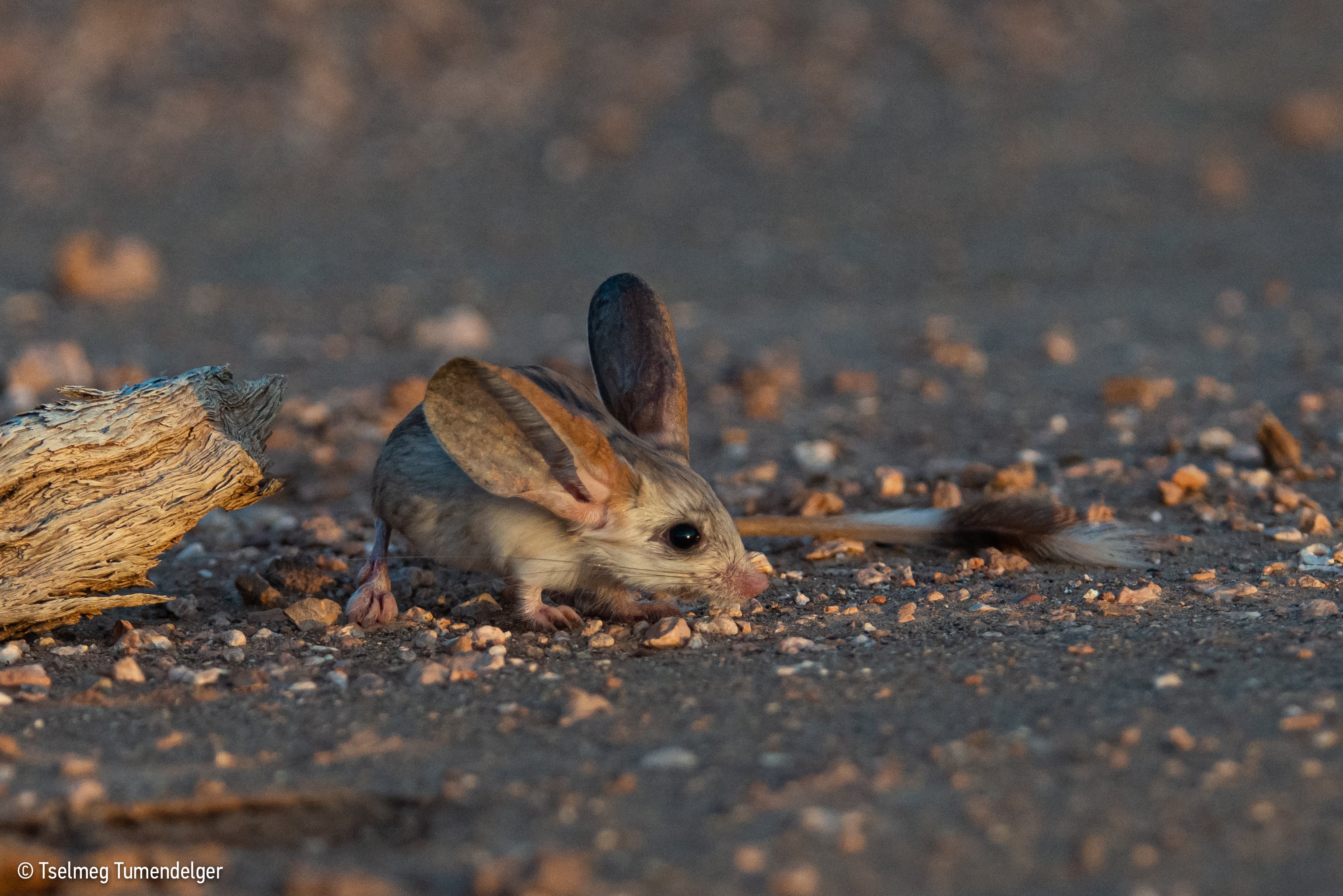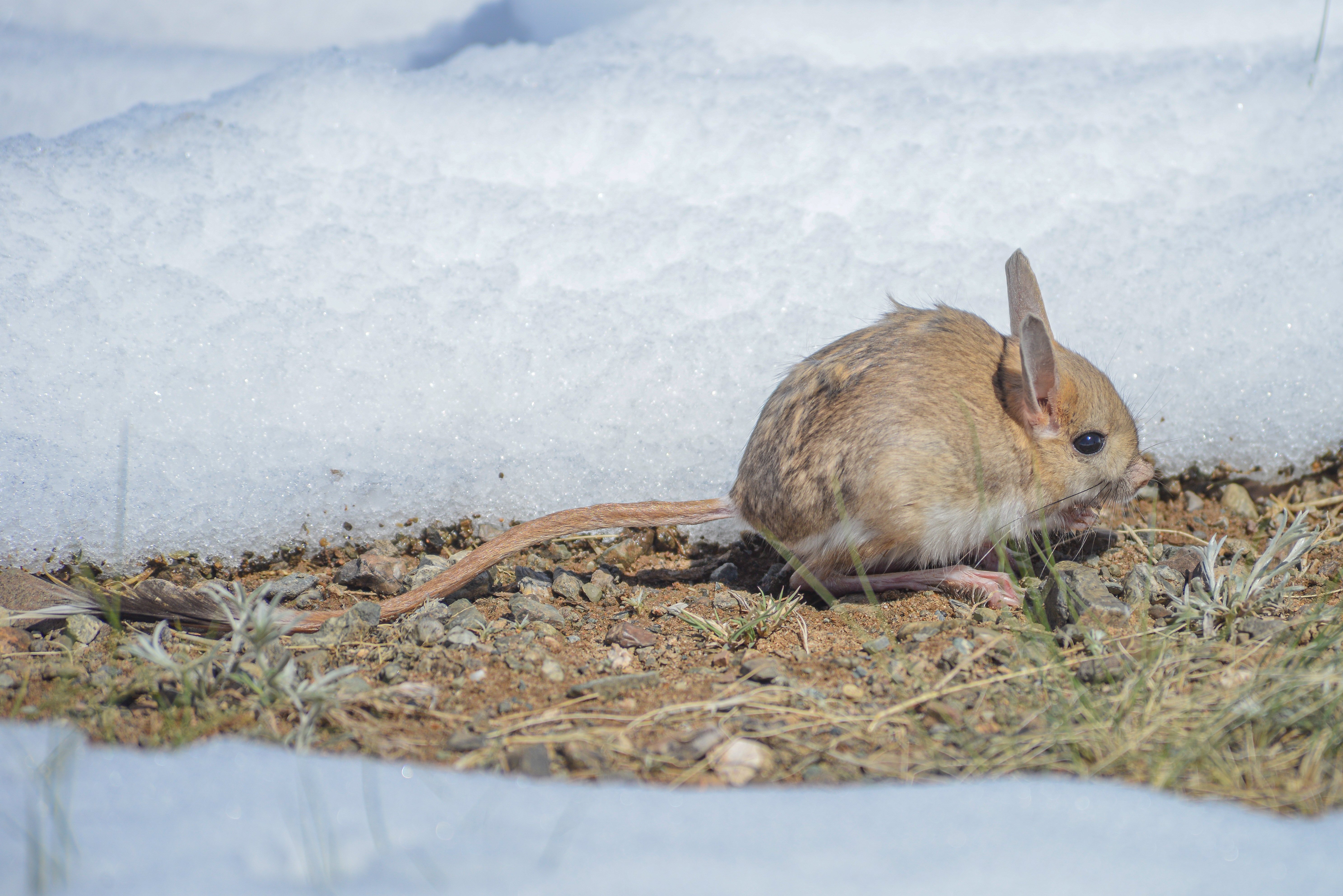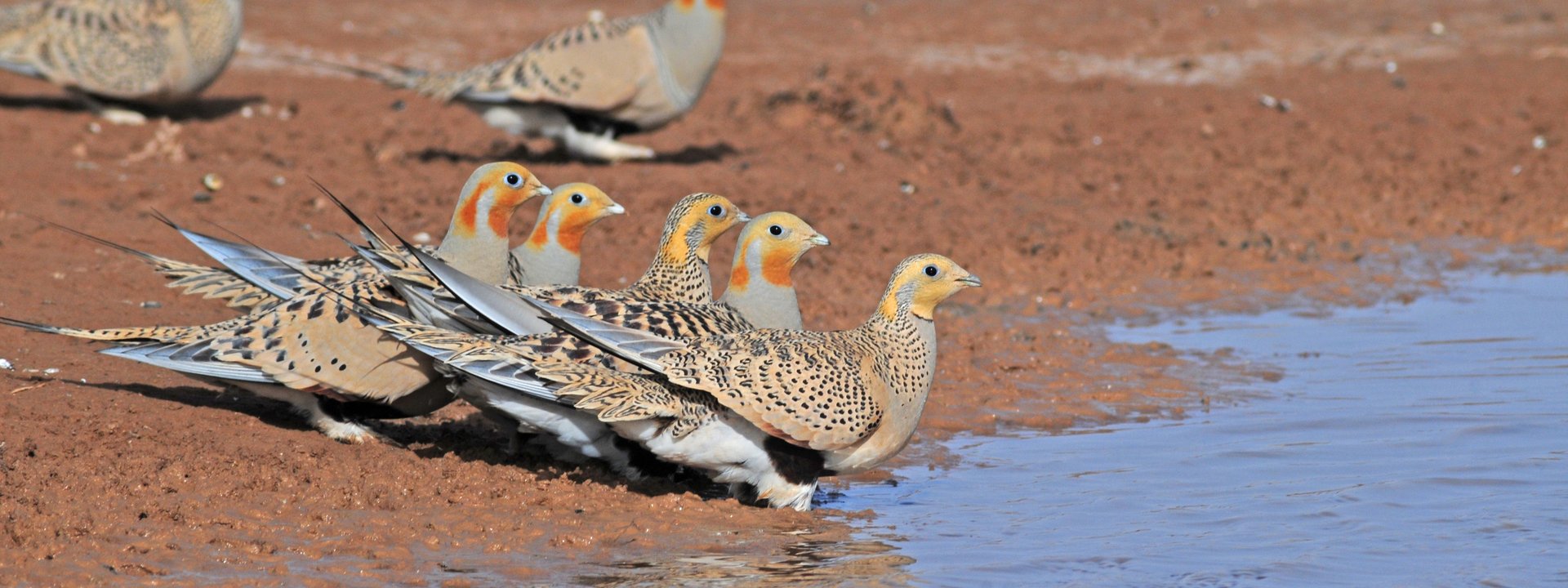Mongolia
Birds and Mammals of the Gobi and remote Mongolia
A speciality trip looking for many of Mongolia's special highlights
For many people, all they probably know of Mongolia are some vague stories about Genghis Khan and the Mongols who conquered much of the known world in the 12th and 13th centuries and established the largest contiguous empire in history. There is, however, much more than amazing history in Mongolia, as it not only has spectacular scenery but also some great birds and mammals and on this new WildWings tour, we hope to see many of the avian and mammalian highlights.
Led by WildWings guide Frank Lambert, who has made multiple visits over the last decade, we plan to explore the key habitats across Mongolia including the Gobi Desert, taiga forests, lakes and mountains.
With one of the lowest population densities of any country on Earth, there are few hotels outside of the main towns, so for much of our trip we will be 'camping in the bush', as this means we will be based close to the areas we want to explore. We will, however, take an experienced support team with us who will not only be responsible for setting up (and taking down) our tent camps but will also provide us with a range of tasty meals and hot water for washing when required.
There is no denying that on some days, we will have to travel considerable distances and often this will be on barely discernible tracks rather than tarmac roads, but the rewards will be great and we can expect to have an unforgettable experience. Indeed, the list of speciality species is truly mouth-watering and over the course of our trip, we hope to see birds such as White-naped Crane, Pallas’s Sandgrouse, Black-billed Capercaillie, Altai Snowcock, Oriental Plover, Mongolian Ground-Jay, Azure Tit and Mongolian (Kozlov’s) Accentor.
We will also spend some of our time looking for mammals, as there are some fantastic species to look for including gazelles, ibex and some extraordinary jerboas. Our tour also includes a visit to the Khustai National Park where we hope to see the world's only true wild horse, Przewalski’s Horse.
Many people who have previously travelled to Mongolia with Frank Lambert have ranked it as one of their best ever trips and we are confident that those who join our 2023 tour will feel likewise.
IMPORTANT: you may find others offering cheaper birding trips to Mongolia, however, these are typically in uncomfortable Russian-made vans. The windows are small and you will need to get out whenever birds are found. On the WildWings trip, we are not economising and will travel in comfortable 4x4 vehicles (ie Land Cruisers or equivalent) making for a much better overall experience.
Tour Dates & Prices
Tour Highlights
- Birding in Mongolia’s main habitats, from the Gobi Desert in the south to Taiga Forest in the north and including the seldom-visited Khangai Mountains.
- Incredible scenery in regions rarely visited by non-birding tourists and camping under truly amazing night skies.
- Look for specialities including breeding species such as Demoiselle Crane, Pallas’s Sandgrouse, Black-billed Capercaillie, Oriental Plover, Mongolian Ground-Jay, Azure Tit, Chinese Grasshopper Warbler, Hodgson’s (White-throated) Bushchat, “Khangai Rosy Finch”, Güldenstädt's and Eversmann’s Redstart, Blyth’s Pipit, Pallas’s Reed and Yellow-breasted Bunting, and the endemic Mongolian (Kozlov’s) Accentor.
- Impressive numbers of breeding waterbirds including Swan Goose, White-naped Crane, Asiatic Dowitcher, Eastern Marsh Harrier, Citrine Wagtail, Mongolian Gull, and with luck, Relict Gull.
- An opportunity to see a variety of mammals, including two species of gazelle, pikas, jerds, hamsters, jerboas, Long-eared Hedgehog and Przewalski’s Horse, a species brought back from the brink of extinction.
- An opportunity to see how traditional nomadic herdsmen live in the modern age.
- Expertly led by Frank Lambert who has made multiple trips to this amazing country over the last decade.
Outline Itinerary
Arrive Ulaan Bator and transfer to our hotel in excellent birding habitat near the edge of the city. Night Mongolica Hotel
Birding around our hotel, drive to Mungun in the afternoon Night camping in our own tents
Birding in Taiga Forest at Mungun all day, with a very early start to search for displaying Black-billed Capercaillies. Night: Camping in our own tents
Birding at Mungun Forest early morning. Drive back to Ulaan Bator stopping on route for some birding. Night Mongolica Hotel
All day drive south to Dalanzadgad on the edge of the Gobi Desert. We will stop occasionally for interesting birds on route. Night: Hotel in Dalanzadgad
Searching for specialised semi-desert breeding species around Dalanzadgad. Night: Hotel in Dalanzadgad
Birding again around Dalanzadgad. Night: Yurts in tourist camp near Yol Valley
We will bird from the Yol Valley to Khongor Sand Dunes, traveling westwards through remote countryside. We should have an opportunity to look for nocturnal mammals in the evening. Night: Tourist Camp near Khongor Sand Dunes
Birding at the Khongor Sand Dunes early morning then drive to Baga Bogt, the best site for Altai Snowcock. Night: Camping in our own tents
Early morning birding at Baga Bogt, then travel to Kholboolj Lake via Orog Lake Night: Camping in our own tents
Travel from Kholboolj to Boon Tsagaan. Night: Camping in our own tents
Drive to Khokh Lake (Khukh Nuur). Night: Camping in our own tents
Birding around Khokh Lake in the vicinity of the Khangai Mountains. Nights: Camping in our own tents
Drive to Bayankhongor from Khokh Lake. Night: Hotel in Bayankhongor Town
Drive from Bayankhongor to Arvaikheer then onwards to Elsen Tasarkhai Night: Camping in our own tents
Elsen Tasarkai to Bayan Lake to Khustai National Park Night: Yurts in tourist camp at entrance to Khustai NP
Early morning trip into Khustai National Park to look for Przewalski’s Horse before driving on to Ulaan Bator Night: Mongolica Hotel
Depart Ulaan Bator for UK
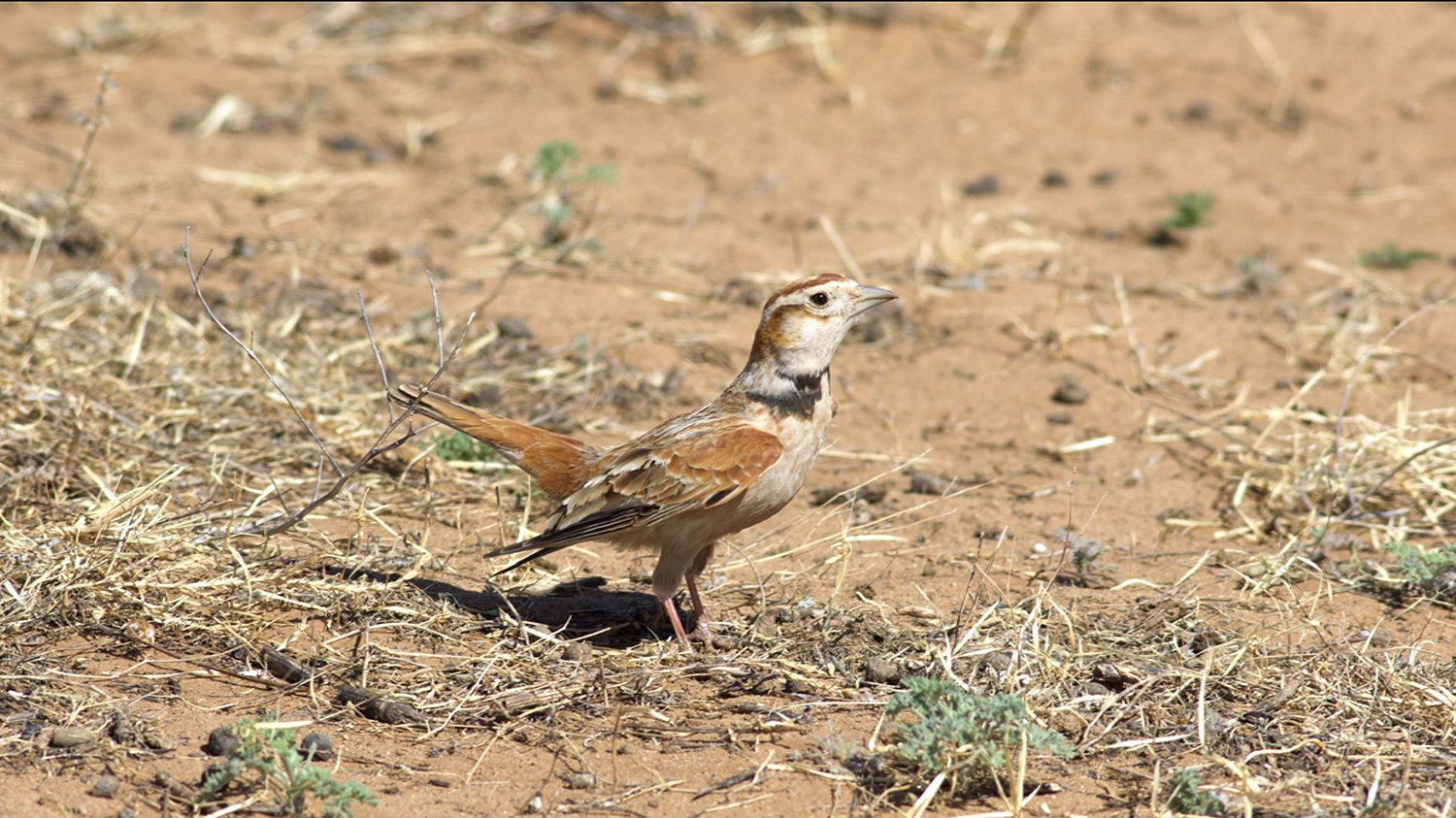
Mongolia in Summer is a WildWings tour for the adventurous world birder, involving travel in four-wheel drive vehicles through magnificent scenery, often in remote areas on barely discernible roads. The trip will involve regular camping out under star-filled skies or staying in yurts at tourist camps close to the habitats and birds that we seek.
Every birder who visits Mongolia rates it very highly; indeed, it is often listed in the top three destinations worldwide. This isn’t because Mongolia is full of endemic birds, or even because it supports a huge number of species, but rather because Mongolia provides the visitor with an experience unmatched by any other birding itinerary, combined with an incredible suite of birds. It is an adventure like no other, traveling through endless open spaces shared only with the occasional nomadic herdsman and we will encounter almost no other vehicles outside of the small villages we pass. Camping under wondrous star-studded skies with only natural sounds is an unforgettable experience that is now rare on our planet.
This incredible wilderness is dotted with ephemeral wetlands that sometimes teem with birds, all in breeding plumage, including the majestic White-naped Crane, a variety of waterfowl, grebes and an assortment of waders including Asiatic Dowitcher, along with species such as Paddyfield Warbler and Citrine Wagtail. Meanwhile, the drier intervening grasslands support White-winged Lark, Mongolian Finch, Pallas’s Sandgrouse, Greater Sand Plover and Saker Falcon, whilst adjacent rocky areas are patrolled by Golden Eagles, Black Vultures and Lammergeiers, and frequented by Chukar Partridge, Pied Wheatear, Godlewski’s Bunting and White-winged Snowfinch. Mountain ranges that rise out of the plains are home to Wallcreepers, Khangai Rosy Finch, Güldenstädt's and Eversmann’s Redstart, Hodgson’s Bushchat and the elusive Altai Snowcock.
To the south, desert and semi-desert species frequent the edges of the inhospitable Gobi Desert, including Oriental Plover, Mongolian Ground-Jay, Saxaul Sparrow, Steppe Grey Shrike and Asian Desert Warbler. To the north, in the mixed Taiga Forest, there is a completely different set of birds including Black-billed Capercaillie, Black and Three-toed Woodpeckers, Siberian Rubythroat, Chinese Grasshopper Warbler, Pallas’s Leaf Warbler, Siberian Tit (rare) and Ural Owl. Mongolia also supports areas of riverine forest around the capital and these are home to Azure Tit, White-crowned Penduline Tit, Long-tailed Rosefinch, Azure-winged Magpie, Daurian Jackdaw and Amur Falcon.
During our circular tour around the central part of this vast country, we will visit all of these habitats, and we hope to see most of these bird species, along with a supporting cast of mammals including gazelles, a dazzling array of rodents, and stunning nocturnal jerboas. We will also visit a reserve where the world’s last Przewalski’s Horses can be found.
The trip will be led by Wildwings guide Frank Lambert, who has travelled regularly to all the locations we visit and we will be supported by a friendly team of Mongolians who have been working with Frank for the last decade. As well as drivers who are familiar with all the sites we visit, local staff include a mechanic and a cook.
Wildwings will also provide a second leader to ensure that each vehicle has its own knowledgeable guide should the number of clients require more than two 4WD vehicles. Please see our "tour info" tab for more information.
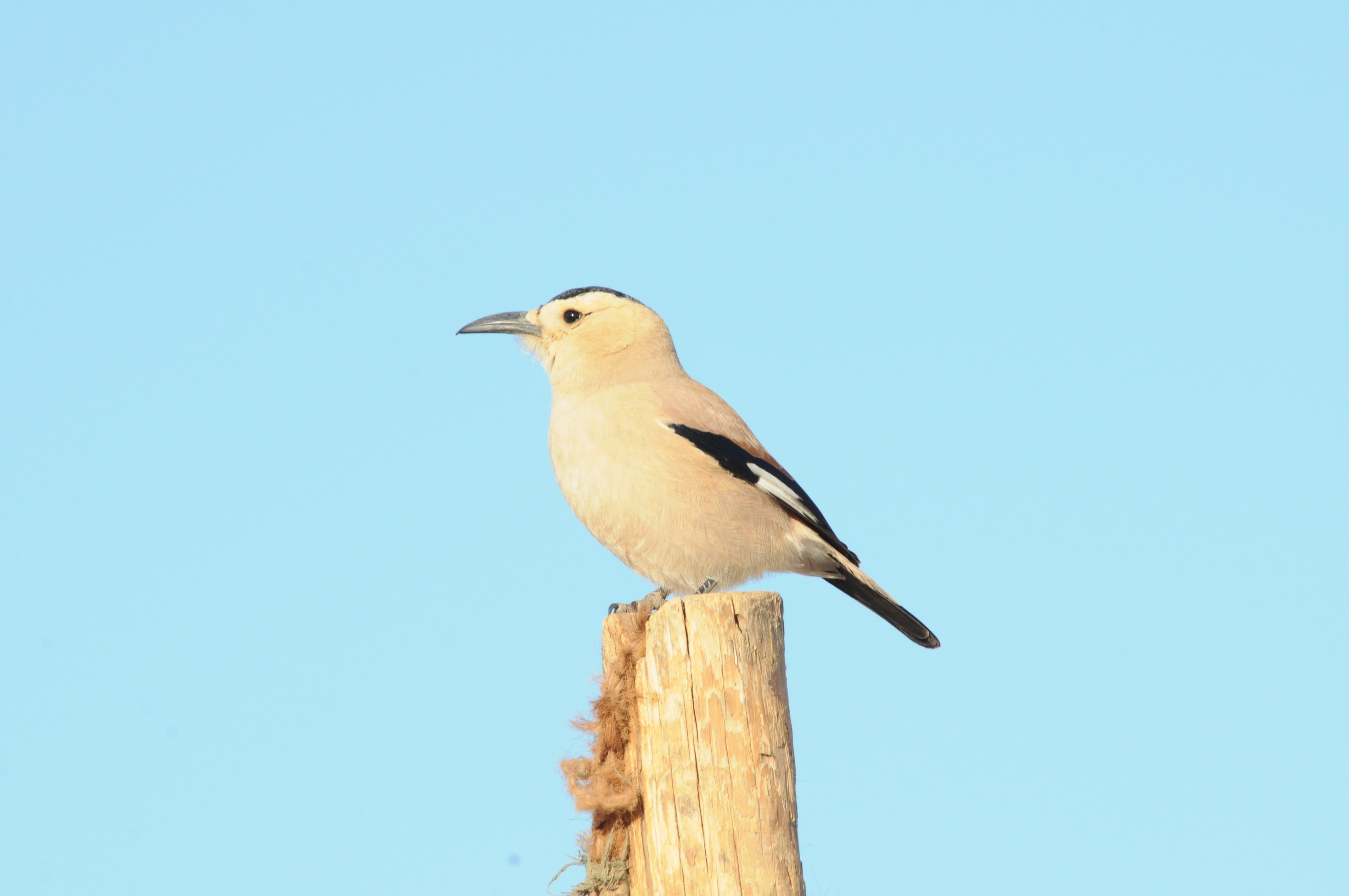
Detailed Itinerary
Day 1: Ulaan Bator
For those not arriving on our recommended flights, we will meet at our hotel on the outskirts of the capital of Mongolia, Ulaan Bator (Ulaanbaatar) which is conveniently located only about 30 minutes eastwards of the airport and surrounded by excellent birding habitat. Anyone who arrives early will certainly enjoy some good birds if they explore the area around the hotel. Night Mongolica Hotel
Day 2: Birding around our hotel and Ulaan Bator, driving to Mungun in the afternoon
Our first full day we will start by birding on foot from our hotel. The surrounding scattered trees and bushes support small numbers of Azure Tits, as well as Great Tits, and the former will be one of our main targets here. Whilst searching, we hope to also see Azure-winged Magpie, Daurian Jackdaw, Red-billed Chough, and perhaps Amur Falcon, which breed locally in most years.
There is also a small population of introduced Mandarin, sometimes seen sitting in the bigger trees near our hotel, as well as Goosander on the nearby river. Late migrants also inhabit the area, and we have sometimes previously see species such as Hawfinch, Taiga Flycatcher, Two-barred Greenish and Dusky Warblers at this time of year.
Later in the day, we will head towards Mungun Forest, a journey that usually takes up to five hours, initially passing through the congested roads of the capital. The first part of the drive will be on tarmac, but the last couple of hours will give us our first experience of traveling on tracks through the countryside. On route, we will bird in some riverine forest areas along the Tuul River where we hope to see White-crowned Penduline Tit and Long-tailed Rosefinch.
On our journey to Mungun, we are likely to see birds such as Black (Cinerous) Vulture and Steppe Eagles and there is a chance of Hill Pigeon in one of the small villages that we pass. Arriving in Mungun, the tour staff will set up our camp and prepare our evening meal whilst we do some birding nearby.
Mungun is an area of mixed forest (coniferous and deciduous trees) at the southern edge of the Taiga, stretching north from here into Siberia. It is in this forest that we hope to find Black-billed Capercaillie, the males of which start lekking even before it gets light.
Depending on where the capercaillies are lekking, we may sleep in tents in the forest not far from the lek. This will enable us to first hear the males (before it gets light), and then search carefully as it gets light (which is around 4am at this time of year) from close to our tents, thus avoid disturbing the birds by moving around. Night:Camping in our own tents
Day 3: Birding in Taiga Forest at Mungun
After our early morning search for Black-billed Capercaillie, we will concentrate on seeing some of the other special birds in this area. Bushy habitats at the edge of the forest support Chinese Grasshopper Warblers, a late arriving migrant that should have arrived in small numbers by the time of our visit. Like its more well-known close relatives, it is best found by voice, and being incredibly skulking, can be frustrating to see.
The forest edge is also the best area to see other breeding species such as Oriental Cuckoo, Pine Bunting, Siberian Rubythroat, Black-throated Thrush, Willow Tit, Yellow-browed, Hume’s and Pallas’s Leaf Warbler, Dusky Warbler, Brown Shrike and Black Woodpecker. Scarce species at this site that we might be fortunate to encounter include Daurian Redstart, Upland Buzzard, Three-toed Woodpecker, Lesser Spotted Woodpecker and the seldom seen Siberian Tit (Grey-headed Chickadee).
During the evening we may hear Ural Owl and will certainly try to see this species if there is one close by although, with a lot of luck, they can also be found during the day. As well as birds, there are a few species of mammal that we might encounter at Mungun such as, Eurasian Red Squirrel and Siberian Chipmunk.
If we are unfortunate and do not see capercaillie at a lek, we hope to find them whilst walking through the forest, and this would be a priority. Night:Camping in our own tents
Day 4: Early morning birding at Mungun Forest then drive back to Ulaan Bator stopping on route for some birding
We plan to split our day between more birding at Mungun and sites on our way back to Ulaan Bator, depending on what species we have not seen during the previous days. In some years, a few pairs of the critically endangered Yellow-breasted Bunting breed in an area a couple of hours from Mungun, and we will certainly look to find time to search for these if we have not already seen any near Ulaan Bator.
We may also visit a large lake on our way back to the hotel where Demoiselle Cranes regularly stop over on migration and a few waders and duck can sometimes be found, although this is entirely dependent on water levels. Somewhat surprisingly, Stejneger’s Scoter are regularly encountered here, although typically the birds are rather distant. Night Mongolica Hotel
Day 5: Drive south to Dalanzadgad on the edge of the Gobi Desert stopping occasionally for interesting birds on route
After breakfast at the Mongolica Hotel, we will drive south on a tarmac road all the way to the large southern town of Dalanzadgad. The journey takes around 6 hours non-stop, but we will not be rushing, and will stop for interesting birds as we travel. We often see our first Pallas’s Sandgrouse on this route, and there is a particular watering hole (depends on water availability) nearer Dalanzadgad where they regularly congregate to drink. If there is water at this location, we might expect to see a few other species here including larks and even passerine migrants stopping for a drink in an otherwise parched landscape. Pere David’s Snowfinch is also often seen along this stretch of road and we will certainly stop if any are spotted from our vehicles.
Depending on what time we reach our destination, there may be an opportunity for some local birding a few kilometres from town. Night: Hotel in Dalanzadgad
Day 6: Searching for specialised semi-desert breeding species around Dalanzadgad
The Dalanzadgad area provides our main chance to see breeding Oriental Plover and Mongolian (Henderson’s) Ground Jay, both of which usually occur within 10-20 miles of the town, but in two very different habitats and these two specialities will be our main focus whilst based in Dalanzadgad. They both occur at low density, so it can take a few hours searching to locate either of them. We will generally look for the plover using vehicles, but the ground jay is more likely to be found whilst walking, and we will coordinate searching for this species in one of the areas where we know it occurs.
There are usually a variety of passerine migrants in this area until the beginning of June, and we will find time to search areas around the town. Migrants can include a variety of thrushes, warblers, flycatchers, and species such as Richard’s Pipit and Isabelline Shrike, with the latter breeding in this area. Night: Hotel in Dalanzadgad
Day 7: Birding around Dalanzadgad
We will spend more time around Dalanzadgad looking for any species that we have not seen, but may also venture into the Yol Valley. The mountain passes in this area provides a chance to see birds such as Barred Warbler, Mongolian (Kozlov’s) and Brown Accentor, Common and Himalayan Beautiful Rosefinch (rare), Twite, Godlewski’s Bunting, White-winged Snowfinch, Crag Martin, Golden Eagle, Lammergeier, Himalayan Griffon and Saker Falcon.
We should also see a selection of small mammals as Long-tailed Ground Squirrel and smaller rodents like hamsters, jirds and voles are common most years in the vicinity of Dalanzadgad. Night: Yurts in tourist camp near Yol Valley
Day 8: Yol Valley to Khongor Sand Dunes
We will start early in the Yol Valley, looking for any species mentioned above which we have not already seen, before driving towards the Khongor Sand Dunes. The journey takes us westwards through some remote countryside and in the early morning, we may spot a scattered herd of Siberian Ibex, which at this time of year are retreating to near the top of the mountain peaks and passes.
After leaving the mountains behind, we will travel through what seem like endless dry plains and as we drive, we will be looking out for Greater Sand Plover, which breeds at very low density in open grassy areas. We may also encounter Desert Wheatear, Mongolian Lark and Steppe Buzzards, along with Pallas’s Sandgrouse, and the ubiquitous Horned Lark.
This part of our journey is also a good area to find small herds of both Goitred Gazelle (Black-tailed Gazelle) and Mongolian Gazelle (White-tailed Gazelle) and there is a small chance of seeing Asiatic Wild Ass. All of these mammals are very shy, however, because they have been hunted for generations, so getting close up views is often challenging.
Once we reach the Khongor Sand Dunes, we aim to visit the edge of the sandy area where several species of interest can be found. As the desert cools, we will look for Saxaul Sparrow and Steppe Grey Shrike and after dark, should have an opportunity to look for nocturnal mammals close to the tourist camp, including gerboas (five species have been recorded in the vicinity) and Long-eared Hedgehog. Tolai Hare is also seen regularly in this area during the daytime. Night: Tourist Camp near Khongor Sand Dunes
Day 9: Birding at the Khongor Sand Dunes early morning then drive to Baga Bogt
We have a long journey today, but should have time to have another look for Saxaul Sparrow and Steppe Grey Shrike before we depart. Another possibilities here is Asian Desert Warbler which can be difficult to find but is present at various spots during the first part of our trip.
We will travel over open plains for most of the day, following barely discernible tracks, and passing species such as Pallas’s Sandgrouse, before heading up into the mountains to our remote campsite at Baga Bogt, the best site for Altai Snowcock.
As the team erect our tents and prepare our dinner, we will scan the steep slopes and mountain ridges around our camp for snowcocks, which are much easier to hear than see. Night:Camping in our own tents
Day 10: Early morning birding at Baga Bogt, then travel to Kholboolj Lake via Orog Lake
Our main reason for visiting Baga Bogt is to look for Altai Snowcock, so if we did not obtain good views the previous evening, we will scan the area surrounding our camp shortly after dawn, hoping to see this species. Saker, Chukor Partridge, Wallcreeper, Wryneck, Barred Warbler, Common Rock Thrush, accentors and a number of other species are regularly seen in this area, and we will search for these before descending to the main route and heading north towards Kholboolj Lake.
Mongolian Ground-Jays are sometimes seen in the rocky areas we pass early on our trip, but we have a second opportunity to encounter them here, although for most of the day we will be travelling, only stopping for the more interesting species we pass, and the occasional photographic opportunity.
Like other wetlands in Mongolia, the number and diversity of waterbirds on and around Orog and Kholbooj Lake varies considerably from year to year, but we are certain to see some interesting species in these areas, hopefully including Asian Dowitcher, which usually breeds on Kholbooj Lake.
Commoner species encountered on such lakes can include Bar-headed Goose, Ruddy Shelduck, Whooper Swan, Black-winged Stilt and Pied Avocet, several species of tern, and Mongolian Gull, whilst the fringes may hold Citrine Wagtail, Asian Short-toed Larks, wheatears and Horned Larks. Night:Camping in our own tents
Day 11: Travel from Kholboolj to Boon Tsagaan
This is another travel day, ending at Boon Tsagaan Lake where breeding plumage Relict Gulls are occasionally seen at this time of year, although by no means guaranteed. It is a very large lake, with limited access, so seeing the gulls depends largely on effort. Like other large areas of permanent water, the lake fringes support good numbers of birds and there is usually a large mixed colony of Pallas’s (Great Black-headed) and Mongolian (Vega) Gulls here. Accommodation either in wooden cabins or camping in own tents
Day 12: Drive to Khokh Lake (Khukh Nuur)
This is primarily a travel day, but we will stop if we see anything of particular interest. By this stage of our trip, we will have seen most of the birds that we are likely to see from the road, but we will certainly stop for good photo opportunities and better views of species we have seen before. We may encounter several species of mammal, including Corsak and Red Fox. In the late afternoon, we will gradually climb to the edge of the Khangai Mountains, where we will camp near the shore of the intensely blue Khokh Lake. Night:Camping in our own tents
Day 13-14: Birding around Khokh Lake in the vicinity of the Khangai Mountains
Khokh Lake lies on the edge of some steep, rocky mountain slopes that harbour a number of localised species. The most important birds can be seen without climbing high up the slopes; indeed a good proportion can be found within half a mile of our camp. Those which we will be particularly keen to locate include Hodgson’s (White-throated) Bushchat, Güldenstädt's Redstart, Eversmann’s Redstart, Altai and Brown Accentor, and “Khangai Rosy Finch” (a possible future split from Asian Rosy Finch).
Black-throated Accentor has also been seen in this area, although its status here is unknown, and we may encounter Pallas’s Reed Bunting and Blyth’s Pipit.
Seeing all these species in this terrain is not always easy and we will be relying on our scopes to spot some of these species on the slopes above us.
Higher areas support Altai Snowcock, so this is a backup site in case we were unable to see them at Baga Bogt, but to see them here involves considerable effort and views are invariably distant. Nights:Camping in our own tents
Day 15:Drive from Khokh Lake to Bayankhongor
We will leave early, driving most of the day to our destination in the mid-size town of Bayankhongor, where we will enjoy the opportunity to stay in a hotel. Night: Hotel in Bayankhongor Town
Day 16: Drive from Bayankhongor to Arvaikheer and then onwards to Elsen Tasarkhai
From Bayankhongor, we travel on a good road to the town of Arvaikheer where we will have lunch, before continuing onwards to the wetlands of Elsen Tasarkhai which supports a great variety of waterbirds.
We should find breeding White-naped Crane, Asiatic Dowitcher, White-winged Tern, Eastern Marsh Harrier, Swan Goose, Eared Grebe and Red-crested Pochard.
Oriental Reed and Paddyfield Warblers, Common Reed Bunting and Bearded Reedlings are all possible in the reedbeds, as well as some more difficult species such as Pallas’s Grasshopper Warbler and Eastern Water (Brown-cheeked) Rail (although the latter can be difficult to see unless water levels are suitable).
There are also chance to see Richard’s Pipits, Asian Short-toed Lark, and with luck, a desert race of Lesser Whitethroat in this area. Night:Camping in our own tents
Day 17: Elsen Tasarkai to Bayan Lake to Khustai National Park
After some brief birding at Elsen Tasarkai in the early morning, where we might see the elusive pair of Black-throated Diver which breed on this lake, we will head eastwards to Bayan Lake. This is a large but shallow lake where the water levels fluctuate significantly from year to year.
Bayan Lake shares many of the wetland species which occur at Elsen Tasarkhai, but the surroundings support other species that are more localised.
We will search the dry bushy slopes around the lake for ‘Mongolian Bunting’, a possible split from Pallas’s Reed Bunting which breeds only in this habitat. Wet grasslands near the lake support breeding Eastern Yellow Wagtails which can usually be seen here, and if the water level in the lake is suitable, it may hold a variety of migrant and breeding waterbirds. Occasionally unexpected species turn up here and on previous occasions these have included Little Gulls and a vagrant Hooded Crane.
As we drive along the tarmac road to Khustai National Park, we will pass an area of grassland that usually holds good numbers of Mongolian Larks and the occasional pair of Demoiselle Crane. Several pairs of Saker Falcons also breed on the pylons in this area. Night: Yurts in tourist camp at entrance to Khustai NP
Day 18: Early morning trip into Khustai National Park before returning to Ulaan Bator
Khustai National Park is best known as the last refuge of the incredible Przewalski’s Horse, which we should see on our trip into the park. Przewalski’s is the only true wild horse and the population in Mongolia was reintroduced in 1992 from captive bred individuals, after being declared extinct in the wild in 1969.
Birds we could find here include Meadow Bunting, Steppe Eagle, Golden Eagle, Lammergeier, Daurian Partridge (very difficult), and the eastern race of Common Whitethroat.
Long-tailed Ground Squirrels and Tarbagan Marmots are reasonably common and if we scan with scopes, there are chance for the rare and shy Red Deer, small herds of which favour the upper rocky slopes where they blend extraordinarily well into their surroundings.
After lunch, we travel back to Ulaan Bator, where we will have time to look for any specialities we may have missed at the start of the tour. Night:Mongolica Hotel (30 minutes from the international airport)
Day 19: Depart Ulaan Bator for the UK
Most international flights leave Ulaan Bator airport early in the morning, and we will be taken to the airport at appropriate times for our flights.
Please note that the itinerary may be slightly altered depending on local conditions and on which sites are better in the particular year. This mainly applies to wetlands, some of which may become less suitable for birds after dry winters.
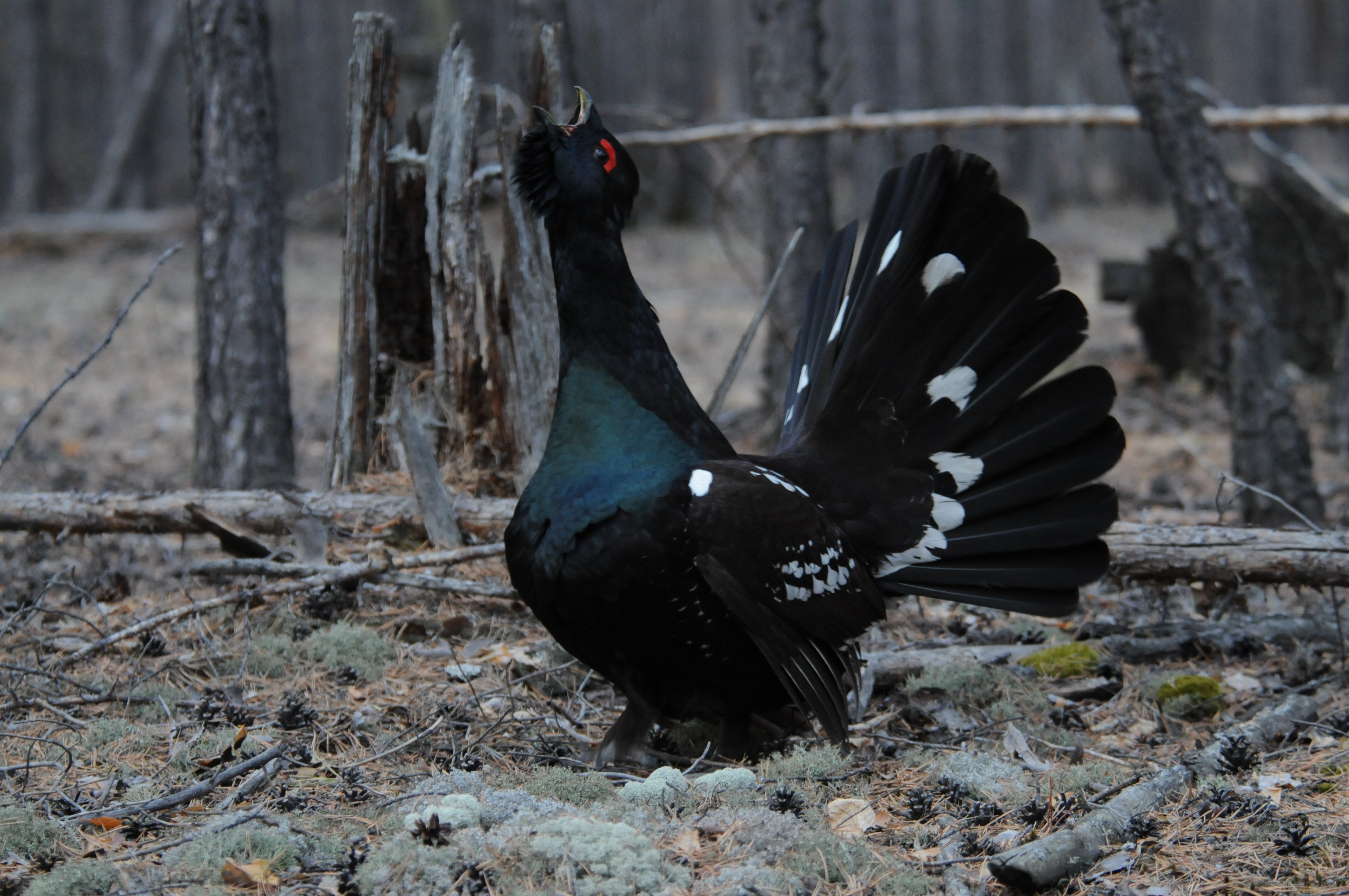
WHAT TO EXPECT
Our small group tour is a true expedition and we will be visiting remote places where the only option is to travel by 4WD vehicles and camp in the scenic wilds of Mongolia. Indeed, whilst we have published an itinerary, this may well be changed either beforehand or during the trip to maximise on the overall wildlife experience.
For much of the trip, we will be travelling on tracks rather than tarmac roads and some of the distances are significant but we have chosen to visit locations which we believe maximise on the chances of seeing the speciality birds and mammals of Mongolia.
It will be necessary for clients to rotate seats in the vehicles and it is important to appreciate that we cannot guarantee that everyone will be by a window all the time.
IMPORTANT: on this trip we will be using comfortable 4x4 vehicles (eg Land Cruisers or equivalent) whilst some others who offer trips to Mongolia use cheaper Russian-made vans. These have small windows and you will have to get out when birds are found which inevitably means some may get flushed and not be seen by the whole group. We believe the benefits of travelling in 4x4 vehicles more than outweighs the additional cost even if it does make for a more expensive holiday.
Early starts and late finishes are the norm for our tours and bird activity is at its peak early morning and late afternoon. During the middle of the day, heat haze can be a problem in Mongolia and, as a result, we will sometimes take a break at this time.
We may offer a few optional excursions after dark (to look for smaller mammals) but when we are based at a site for several hours or longer, clients can choose to stay with the vehicles or at our camp if they wish.
There are occasions when a telescope will be extremely useful and whilst the WildWings leader, Frank Lambert, will bring one, having your own will certainly be advantageous.
Temperatures can vary greatly from year to year and depending on local conditions and altitudes. It occasionally snows in the more northerly parts of the area we will visit, even in early June, although such snow usually clears quickly. On the other hand, by mid-June it is often warm enough to dispense with jackets etc during the hottest parts of the day. Strong winds can also occur at any time, which can lower temperatures significantly. Rain is rare at this time of year, but possible. We, therefore, strongly advise clients to assume that we will experience cold weather at times during the trip, requiring warm hats and gloves as well as a fleece and a good coat and footwear.
Given the remote locations we will be visiting, you should bring spares of things you might otherwise purchase on a tour, eg batteries, certain medicines etc.
Leader
Frank Lambert will lead the trip and depending on the numbers who sign up for the trip, we will send a second WildWings leader if more than two 4WD vehicles are required for clients. One of the vehicles will, however, have an English speaking knowledgeable local guide in it and over the course of the trip, we will rotate not only seats but which vehicle clients travel in. There is a separate 4WD vehicle that carries our experienced support team, camping equipment, and supplies.
Accommodation
For much of the trip, we will be exploring very remote parts of Mongolia and the only option is to camp. We will take a support team who will erect our camp and also prepare the meals and hot water for washing. All tents will have a mattress and a sleeping bag will be provided but you should bring a torch (a headtorch is recommended) with spare batteries. Single travellers can have single tents whilst couples or those who are travelling together can have doubles.
At some locations, we will stay in semi-permanent yurt camps and there will be a few nights when we do stay in hotels, however, as our itinerary is deliberately flexible (to maximise on the wildlife opportunities), clients will need to take the same approach to the nights we have scheduled in hotels, ie these may change.
The hotels we intend to use are modest but comfortable and typically of 2-3 star quality. Whilst other options are available in Ulaan Bator, we choose to stay at the Hotel Mongolica as this has great birding within an easy walk with chances for both Azure Tit and Azure-winged Magpie.
Meals
All main meals are included in the tour price with drinking water also provided. Our support team will be able to cater for vegetarians (although we will need to know in advance) but if you have specific dietary needs please contact us in advance of booking so we can confirm this will be practical given the remote areas we will be exploring.
A modest selection of soft drinks and beers will be taken with us but storage space is inevitably limited, however, we may be able to restock these in some of the villages we pass.
We will have a catering team who will cook and serve our meals when we are camping in the countryside and these will be eaten in the field. We will eat at tables and have a large food tent for occasions when it is windy or cold.
When staying in hotels, we will generally eat in their restaurants although some meals may still be taken in the field and prepared by our support team.
We would encourage you to bring a water bottle (for use during the day) and you may also want to consider bringing some powdered electrolyte.
Walking
The walking is mostly easy to moderate but, nevertheless, we do recommend you bring comfortable but sturdy walking shoes.
We will be doing short walks at altitudes of c.2,300m for snowcocks. Throughout our tour, the majority of our birding will be done in remote regions where we are likely to be the only people. Wherever possible, we bird using our vehicles and walk downhill, however, it may be necessary to go steeply uphill to get closer views of some of the birds (eg Khangai Rosy Finch) but all longer walks will be entirely optional.
To try and see the lekking Black-billed Capecaillies, we will need to be ready before dawn and may have to walk a short distance in the dark with torches, however, we may camp at a spot from where we can see them and use the tents as a hide - it all depends on where the birds are displaying as this changes from year to year.
Photography
This is a birding tour but photographers will have great opportunities to photograph birds, mammals and scenery throughout the tour. It is, however, important to appreciate that it is only when we are staying in hotels that there will be chances to charge camera batteries, so we recommend bringing plenty of spare batteries with you.
Visas
At the time of writing, British citizens needed a visa to enter Mongolia. We will check and advise you on this nearer the time.
Flights
Despite the end of many pandemic restrictions, it is still proving extremely difficult to predict future flight prices and schedules. As a result, we have taken the decision to continue to price our holidays as excluding international flights.
To keep the process as simple as possible, we are working very closely with a dedicated agent at Travel Counsellors, Sacha Barbato, who is essentially now our “in house” flight consultant.
Sacha will be able to advise you which flights we are recommending for each holiday, and he will be able to book these for you.
Tour Gallery
View a gallery of images for this tour below, click on an image to view as full size with caption
